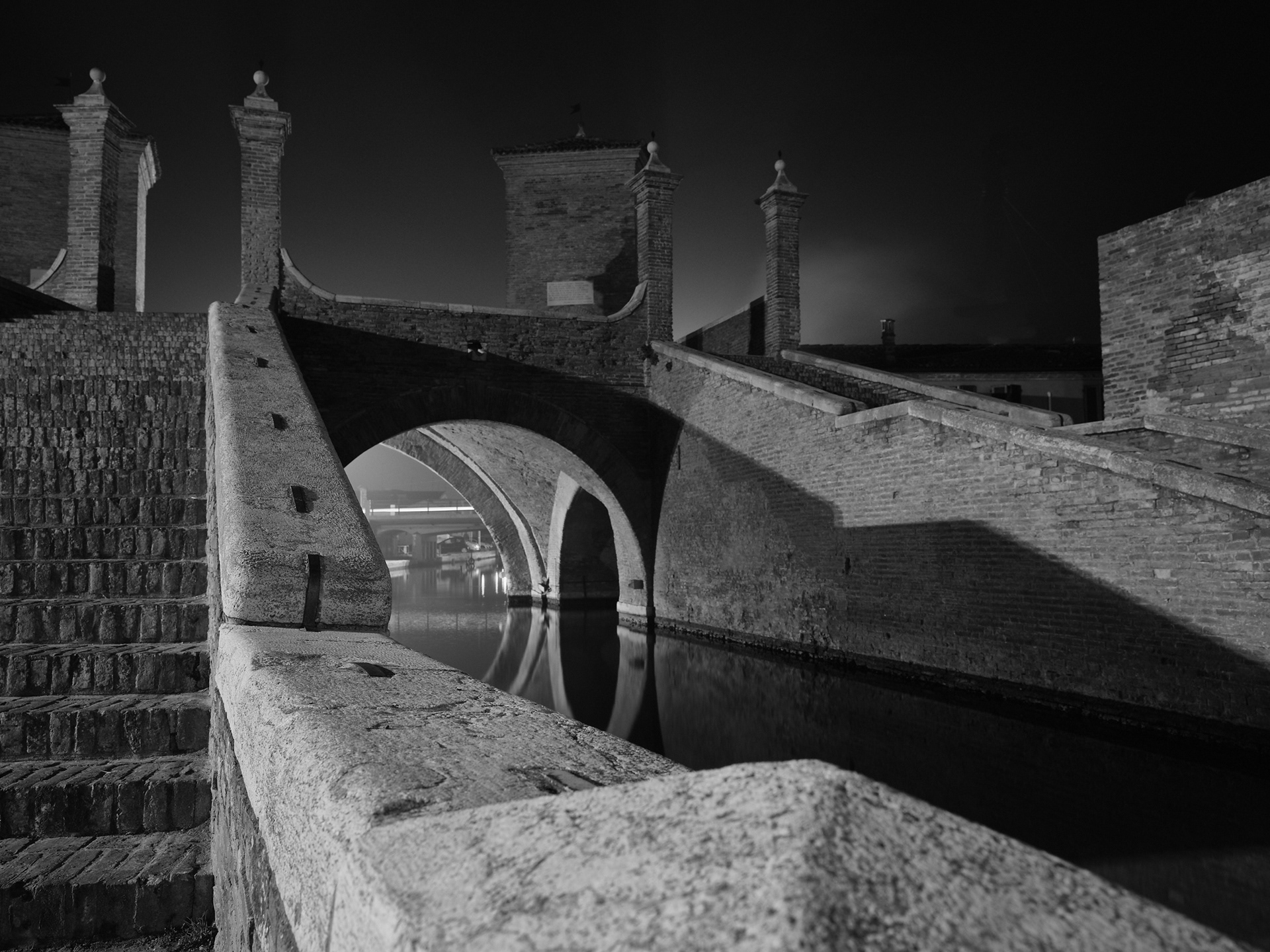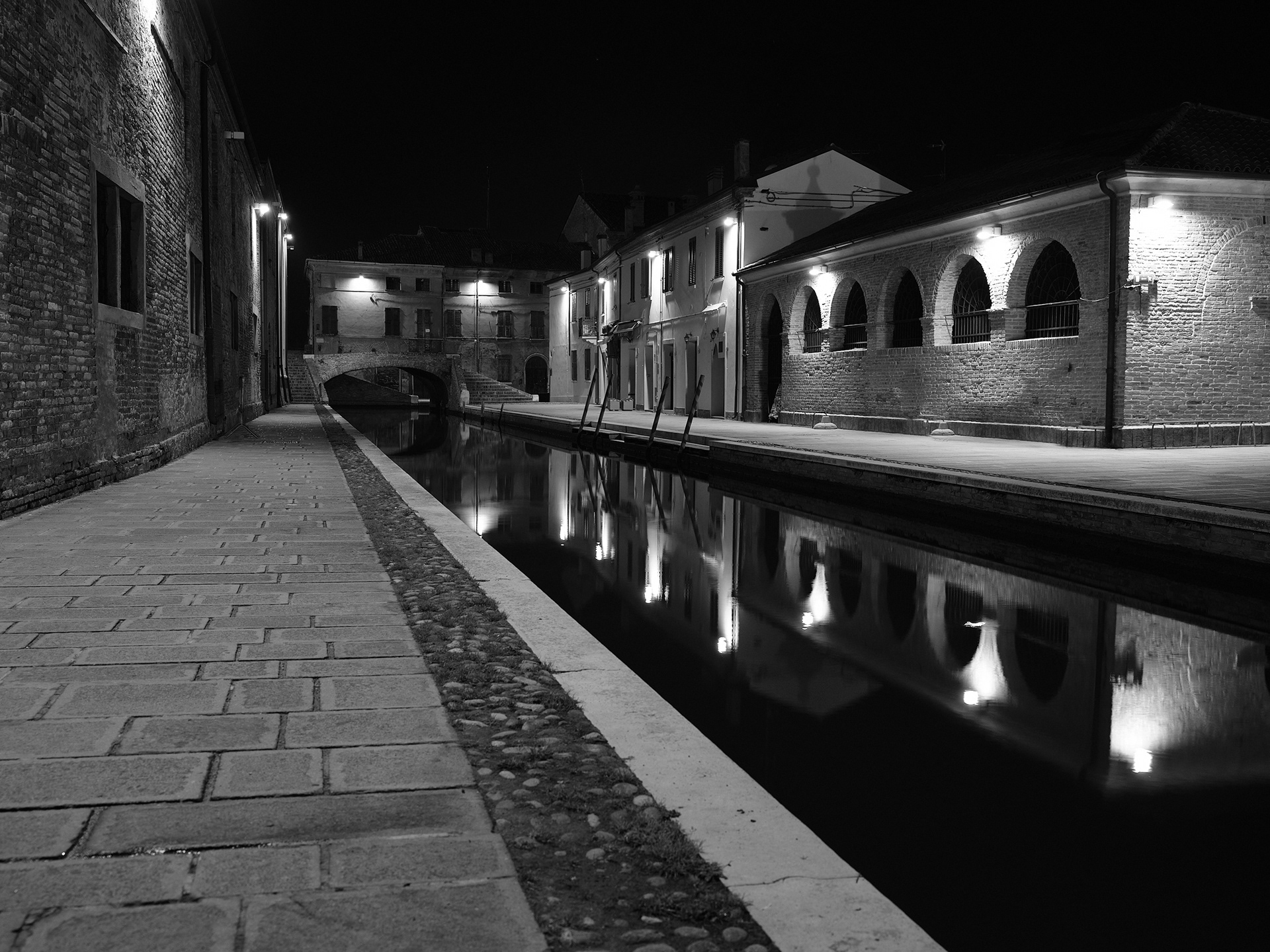“Uno straordinario mosaico di terra e acque, canneti e zolle erbose. Il Po prima di sfociare nell'Adriatico, si divide in mille ramificazioni, terra e mare si abbracciano per generare boschi e pinete, bonelli e valli da pesca dove il silenzio si anima all'improvviso di fruscii, voli di gabbiani e canti misteriosi........”
All'estremità orientale della provincia di Ferrara, il grande fiume dopo un viaggio di oltre seicento chilometri che dal Monviso l'ha portato ad attraversare tutta la pianura padana, giunge in vista del mare e quì da luogo ad uno degli spettacoli naturali più belli: il suo corso principale fin quì lento e maestoso, si divide a formare il suo delta, una enorme mano che con le sue dita aperte si incunea nel mare. Il Parco Regionale del Delta del Po vuole tutelare e valorizzare questi ambienti tra i più belli di tutto il territorio italiano e poco conosciuti da parte del grande pubblico. Il territorio del Delta costituisce il più vasto e articolato complesso di zone umide in Italia ed è riconosciuto a livello internazionale quale punto strategico nel flusso delle migrazioni di moltissime specie di uccelli e luogo di nidificazione per molte altre. E' un insieme di ambienti naturali ed antropizzati, modellatisi nel corso di decenni per l'opera dell'uomo e della forza della natura, dove le testimonianze naturalistiche si alternano a quelle dell'uomo. Gli ambienti umidi rappresentano un vero e proprio paradiso per l'avifauna, tutte le oltre 450 specie che popolano le zone umide italiane possono essere quì osservate ed oltre 150 nidificano regolarmente.Tra le presenze più significative, possiamo senza dubbio segnalare la Beccaccia di mare, Fraticelli, Spatole ,Rondini di mare , Garzette e ultimamente un nutrito gruppo di Fenicotteri rosa. Dove le acque sono più basse si possono osservare tutta una serie di limicoli dal Cavaliere d'Italia, alle Avocette, alle Pettegole, Beccaccini e molti altri. Lungo fossi e canali si può ammirare il volo velocissimo del Martin Pescatore e dove vi sono sponde sabbiose o in terra nidifica il coloratissimo Gruccione. Ovunque è presente l'ormai comunissimo Gabbiano. Nei piccoli lembi di bosco del Mezzano si possono osservare Gufi e Pendolini .
Tra i mammiferi si segnala la presenza di Cervi e Daini nel Gran Bosco della Mesola che rappresenta la parte più a nord del parco. A Mesola e dintorni in particolar modo si possono ammirare due monumenti carichi di storia: il Castello fatto erigere da Alfonso d'Este e Torre Abate un antico manufatto idraulico risalente al xv secolo. Nelle valli di acqua dolce o salmastra viene tuttora praticato l'allevamento e la raccolta del pesce, branzini e orate in particolar modo oltre l'ormai famosa anguilla.
Sugli ultimi residui dunali si possono ancora ammirare le fioriture della Soldanella di mare , mentre nelle sacche di mare come quella di Goro ,una laguna caratteristica a forma di mezza luna, all'alba si può assistere alla attività dei cercatori di vongole favoriti dalla bassa marea che scopre il fondale.
La zona più meridionale del delta ferrarese è Comacchio. Nata su tredici isolotti, questa città lagunare con il suo intreccio di canali e ponti monumentali rappresenta di fatto la capitale del Parco. Comacchio ha intessuto la sua lunga storia con le attività legate all'utilizzo delle valli che la circondavano : allevamento di pesce e anguille , e alle vicine saline . Oltre 11.000 ettari di specchi di acqua salmastra , in cui si concentrano centinaia di specie diverse di uccelli acquatici e vari ambienti vegetazionali legati alla secolare attività della pesca. E' uno degli ambienti umidi più estesi del nord-italia. Quì si possono ancora ammirare i lavorieri e gli antichi casoni. Il lavoriero è un particolare ed ingegnoso sistema per la cattura del pesce di valle. In pratica si tratta di un manufatto a forma di cuneo posizionato all'imbocco dei canali adduttori alla valli, articolato in sbarramenti e griglie mobili che consentono un agevole ingresso al pesce ma ne impedisce l'uscita. L'origine del lavoriero è fatta risalire al XIV secolo. I tipici casoni di valle venivano utilizzati sia come abitazione provvisoria durante i periodi di pesca, sia come magazzini per la attrezzature e anche come torri di guardia contro i pescatori di frodo. Fino all'inizio del novecento erano più di 150 i casoni dislocati nelle Valli di Comacchio oggi ne restano una ventina di cui sei ristrutturati e visitabili. Accanto alle Valli di Comacchio non possiamo non ricordare le Saline, un biotopo di grande interesse naturalistico. La produzione di sale, iniziata in epoca etrusca, è cessata negli anni ottanta. Da allora ha iniziato un lento ed inesorabile declino ma finalmente, ed è notizia molto recente, dopo anni di disinteresse ed abbandono sembra arrivato il momento del loro completo recupero. Scendendo ancora più a sud la perimetrazione ufficiale del Parco comprende anche Ravenna e le antiche saline di Cervia. La citta di Ravenna raggruppa intorno a sé tutta una serie di pregevoli oasi naturali dalla foresta allagata di Punte Alberete a Valle Mandriole, alle oasi dell'Ortazzo e Ortazzino. Le antiche saline di Cervia oggi rappresentano una peculiare area naturalistica insieme alla locale pineta che rappresenta la propaggine meridionale di un esteso complesso forestale che nel passato si sviluppava dal fiume Reno alla città di Cervia.Un Parco disegnato dall'acqua e che dall'acqua viene continuamente modellato e modificato, dove natura e storia si fondono e ogni stagione sa regalare sempre nuove emozioni .
“An extraordinary mosaic of land and water, reeds and turf. Before flowing into the Adriatic, the Po divides into a multitude of branches; land and sea embrace each other to form woodland and pinewoods, bonelli ( area of shallow water with continual reed beds ) and fishing valli ( marshes ) where the silence is unexpectedly broken by rustling, the flight of seagulls and mysterious birdsong ......”
At the easter end of the province of Ferrara, after a journey of more than six hundred kilometres in which the great river has crossed the entire Po Valley, it arrives within sight of the sea and here gives rise to one of nature's most beautiful spectacles: its main course until now slow and majestica, divides to form its Delta: an enormous hand with its fingers open penetrates into the sea. The Po Delta Regional Park protects and enhances these environments which are among the most beautiful in Italy and are hardly known to the public at large. The Delta territory constitutes the largest and most complex of Italy's wetlands and is internationally recognised as a strategic point in the migration of numerous species of birds and a nesting site for many others. It is a composition of natural and modified environments, modelled over the course of decades by man and the forces of nature, where naturalistic phenomena alternate with man-made ones. These wetlands represents a real paradise for birdlife, all 450 species that inhabit Italy's wetlands can be observed here with more than 150 regularly nesting.
Among the most significant species present we can, without doubt, point out the oystercatcher, little tern, spoonbill, tern, little egret and lastly a dense group of red flamingoes. Where the waters are at their shallowest, a whole series of waders including the stilt-plover, the avocet, the redshank, the snipe and many others can be observed. Along the ditches and canals it is possible to admire the rapid flight of the kingfisher and on the sandy banks or in the earth the colourful bee-eatre nests. By now the very common seagull is to be seen everywhere around. Owls and penduline tits can be observed in the narrow of woodland.
Among the mammals present are deer and fallow deer in the Great Wood of Mesola, which represents the most northerly part of the park. At and around Mesola, two monuments full of history can be admired: the Castle erected by Alfonso d'Este and Torre Abate an ancient waterworks construction dating back to the 15th century. In the fresh water or brackish valli fish farming and fishing are still practised: bass and gilthead especially, as well as the by now famous eel.
On the last remaining dunes, flowering pennywort can still be admired, while in the sea inlets such as that at Goro, a characteristic half-moon shaped lagoon, at dawn one can watch peaple searching for clams, helped by the low tides that leave the sea bed uncovered.
The most southerly area of the Ferrarese Delta is Comacchio. Rising on thirteen small islands, with its web of canals and monumental bridges it is, in fact, the capital of the Park. Comacchio has woven its long history around the activities linked to the use of the valli that surround it: fish and eel farming and the nearby salt-works. More than 11,000 hectares of brackish water, in which hundreds of different species of aquatic birds and varied vegetation environments linked to the centuries-old activity of fishing are concentrated. It is one of the most extensive wetland environments in north Italy. Here the lavorieri and the ancient casoni can still be admired. A lavoriero is a special system that ingeniously captures the fish in the valle. In practice, it is a wedge-shaped construction at the mouth of the canals leading to the valli, made up of fences and mobile grills that allow the fish to enter without problems but prevent them from leaving. Their origin dates back to the 14th century. The typical casoni di valle were used a temporary living quarters during the fishing season and as warehouses for the tackle as well as being watchtowers against poachers. Until the beginning of the twentieth century there were more than 150 casoni in the Valli di Comacchio, today about twenty remain of which six have been restored and can be visited. Next to Comacchio we cannot fail to remember the Salt-works, a biotope of great naturalistic interest. Salt production, which began in the Etruscan era, ceased in the 1980s. From then on a slow and relentless decline began, but the very latest news is that after years of neglect and abandonment, the time for their complete rehabilitation seems to have come. Going even further south the southern border of the Park includes Ravenna and the ancient salt-works of Cervia. The city of Ravenna gathers around it a series of beautiful natural oases, ranging from the flooded forest of Punte Alberete to Valle Mandriole, to the oases of Ortazzo and Ortazzino. The ancient salt-works of Cervia are today a peculiar naturalistic area that together with the pinewood represent the southern edge of an extensive forest complex that in the past spread from the river Reno to the town of Cervia.
A park delineated by water and which is continuously modelled and modified by water , when nature and history merge and each season is always capable of giving us new excitement.


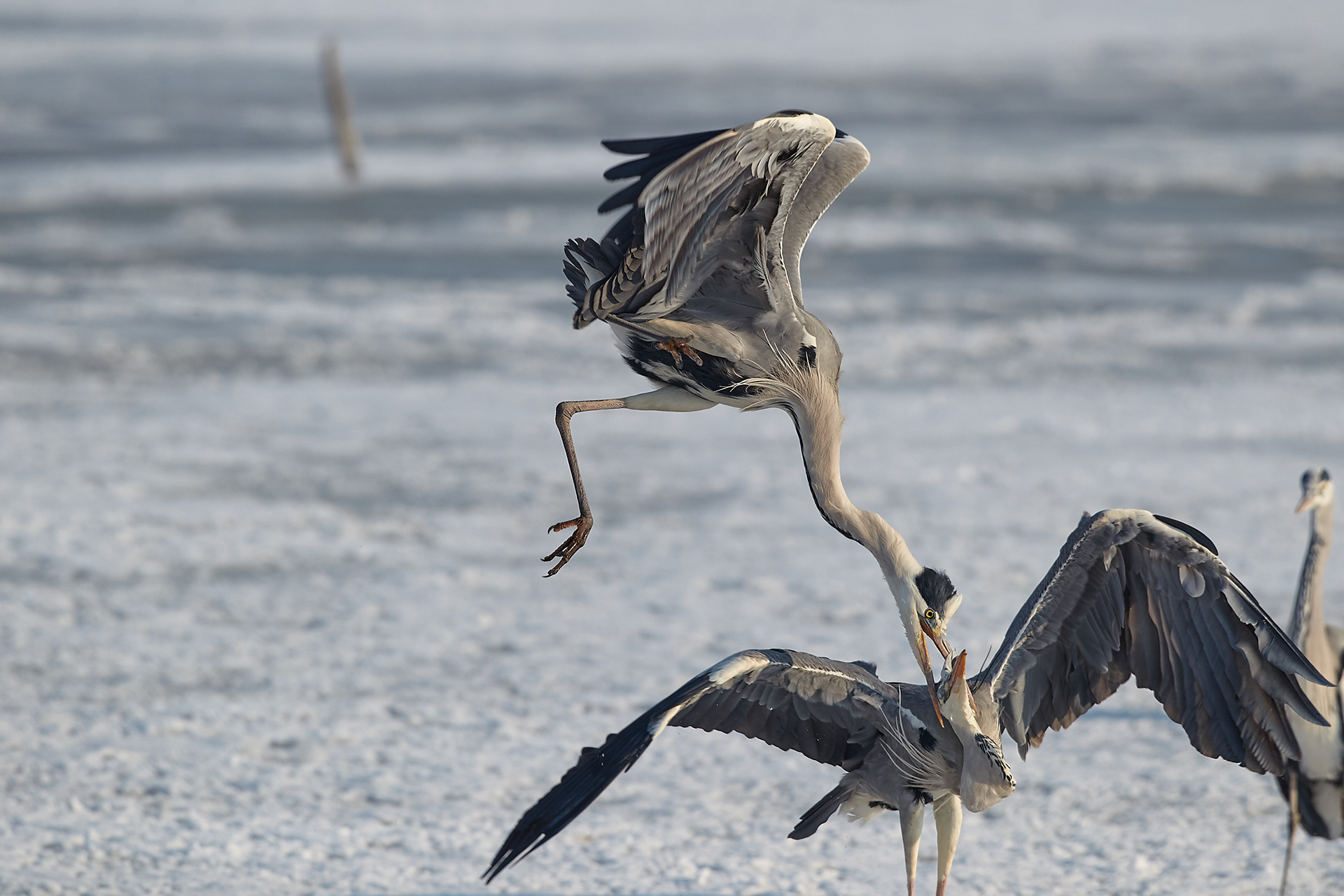




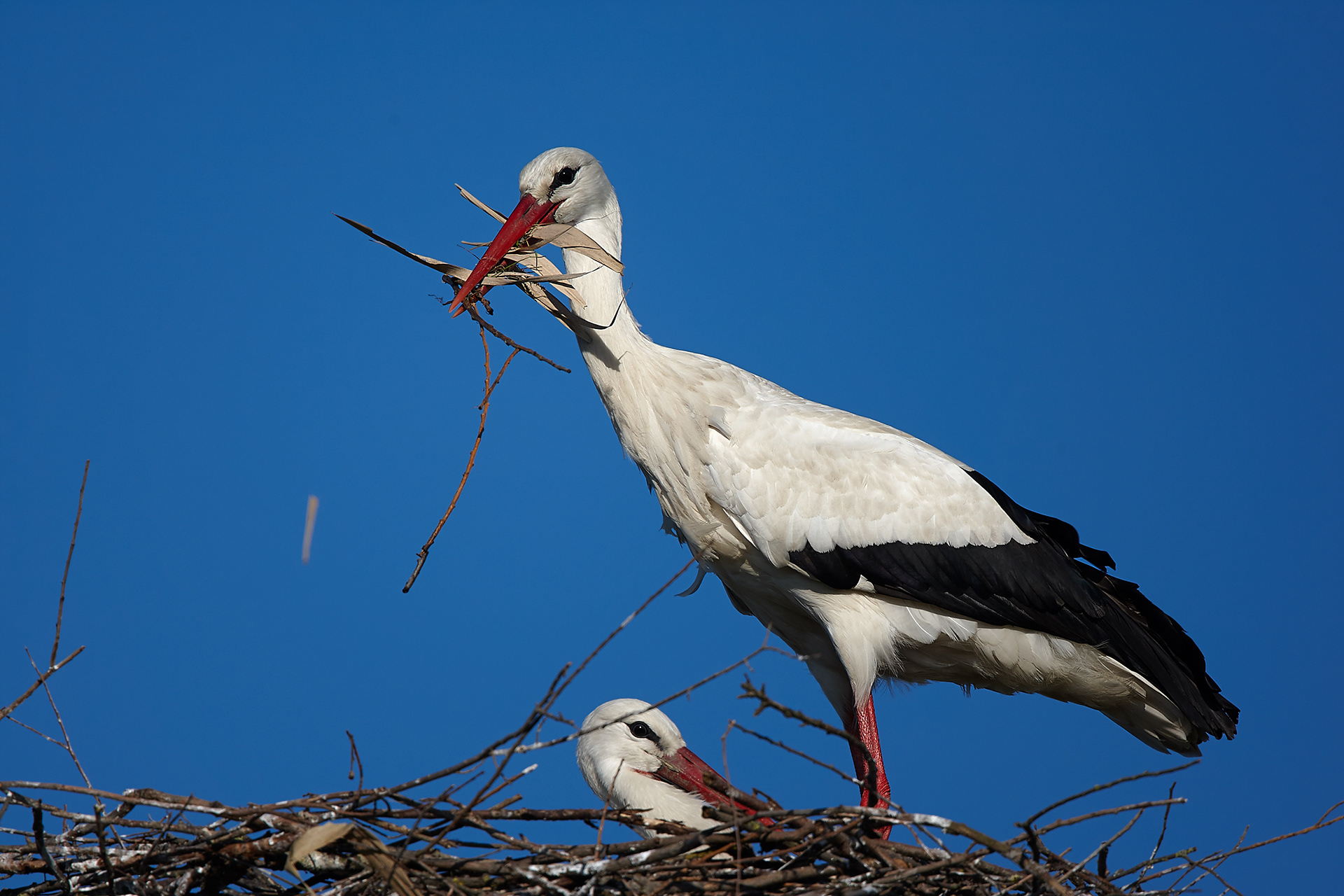
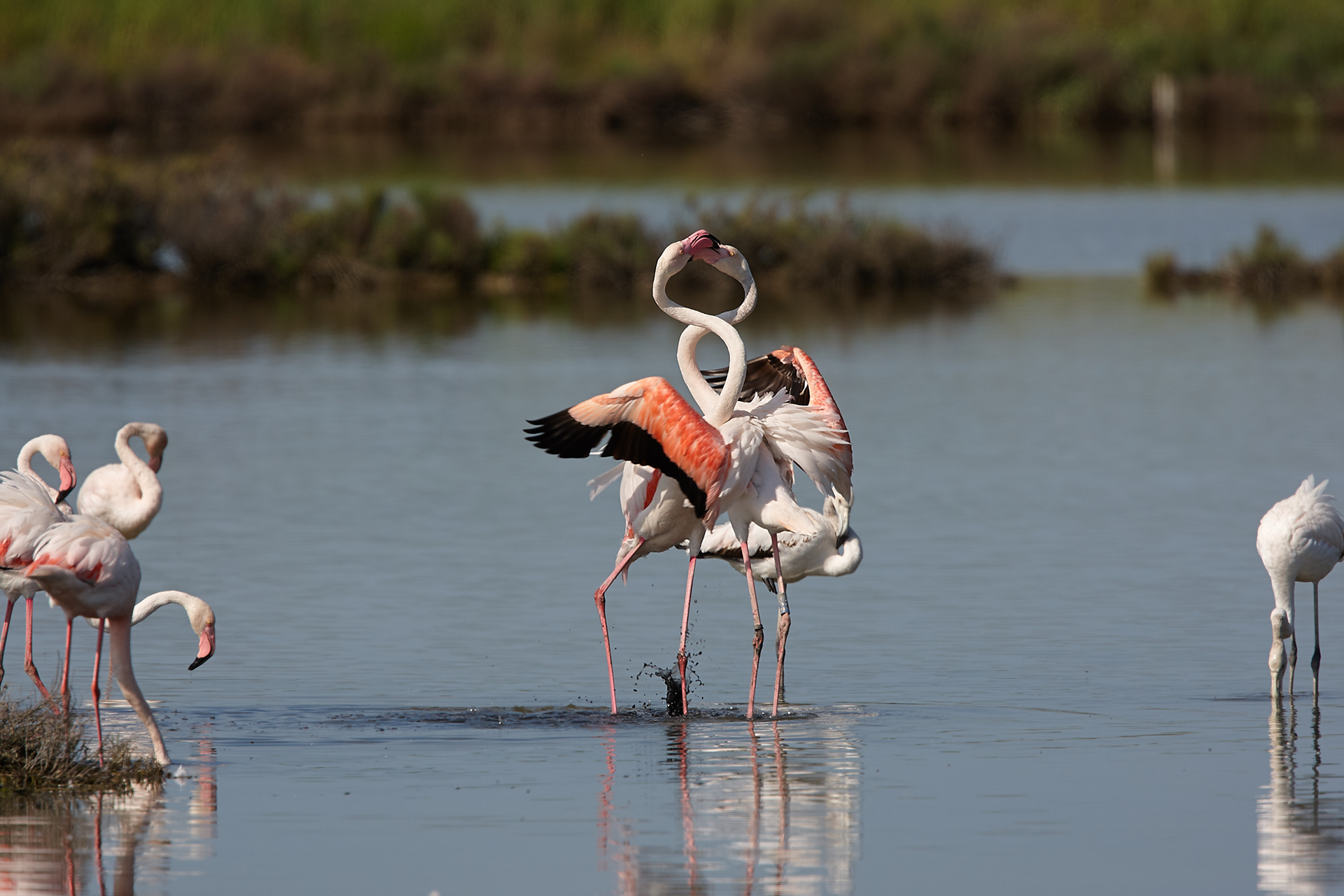
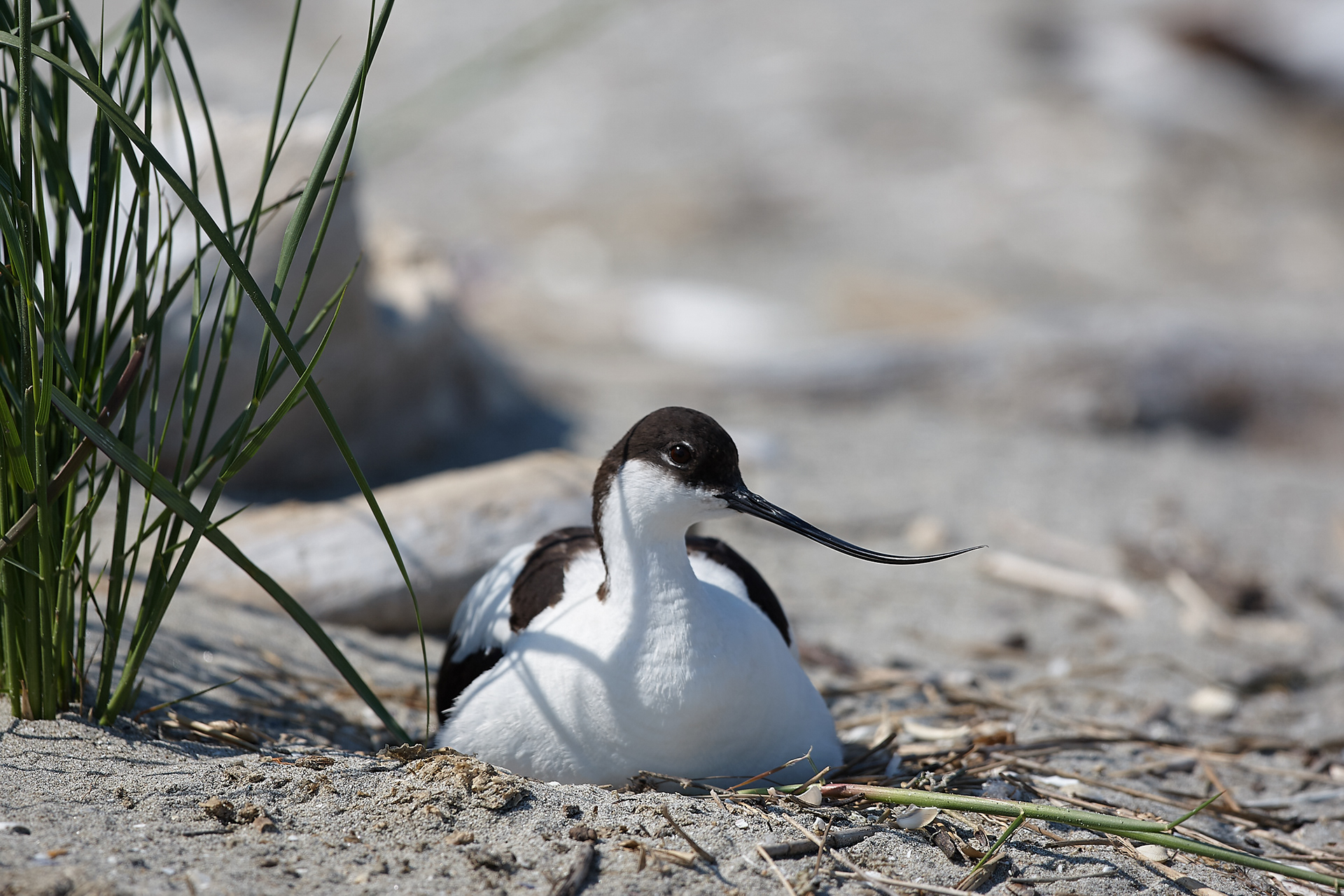
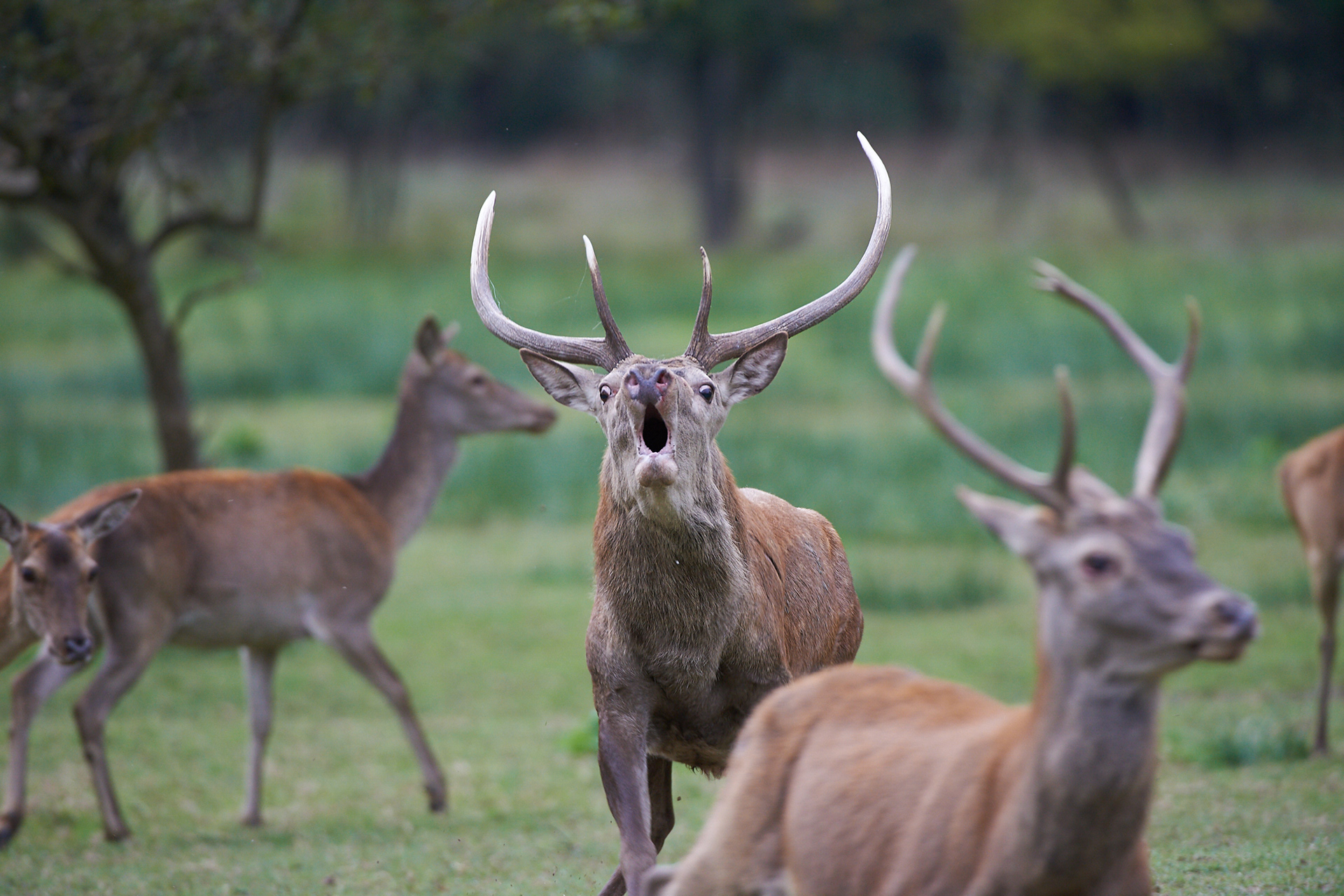


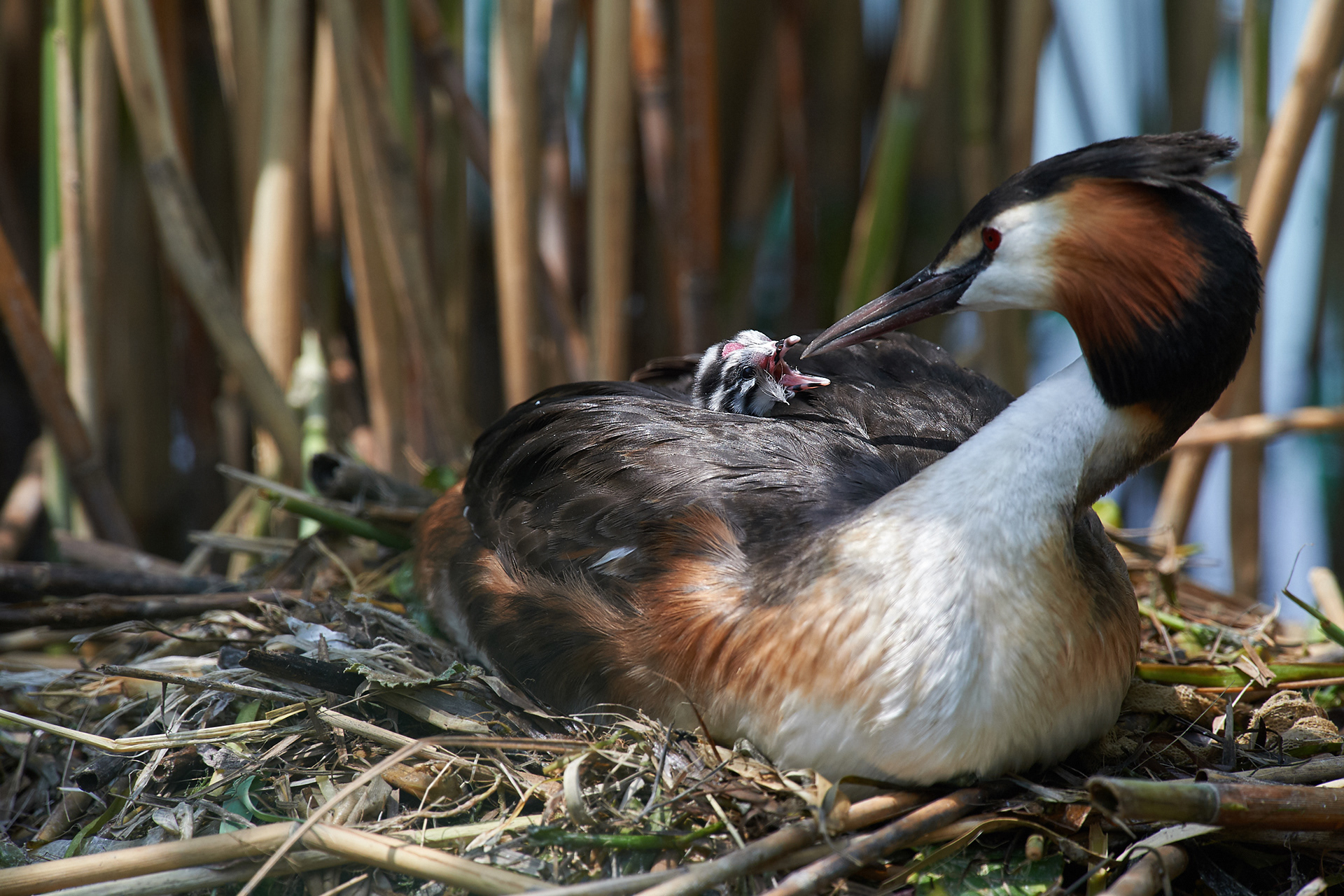

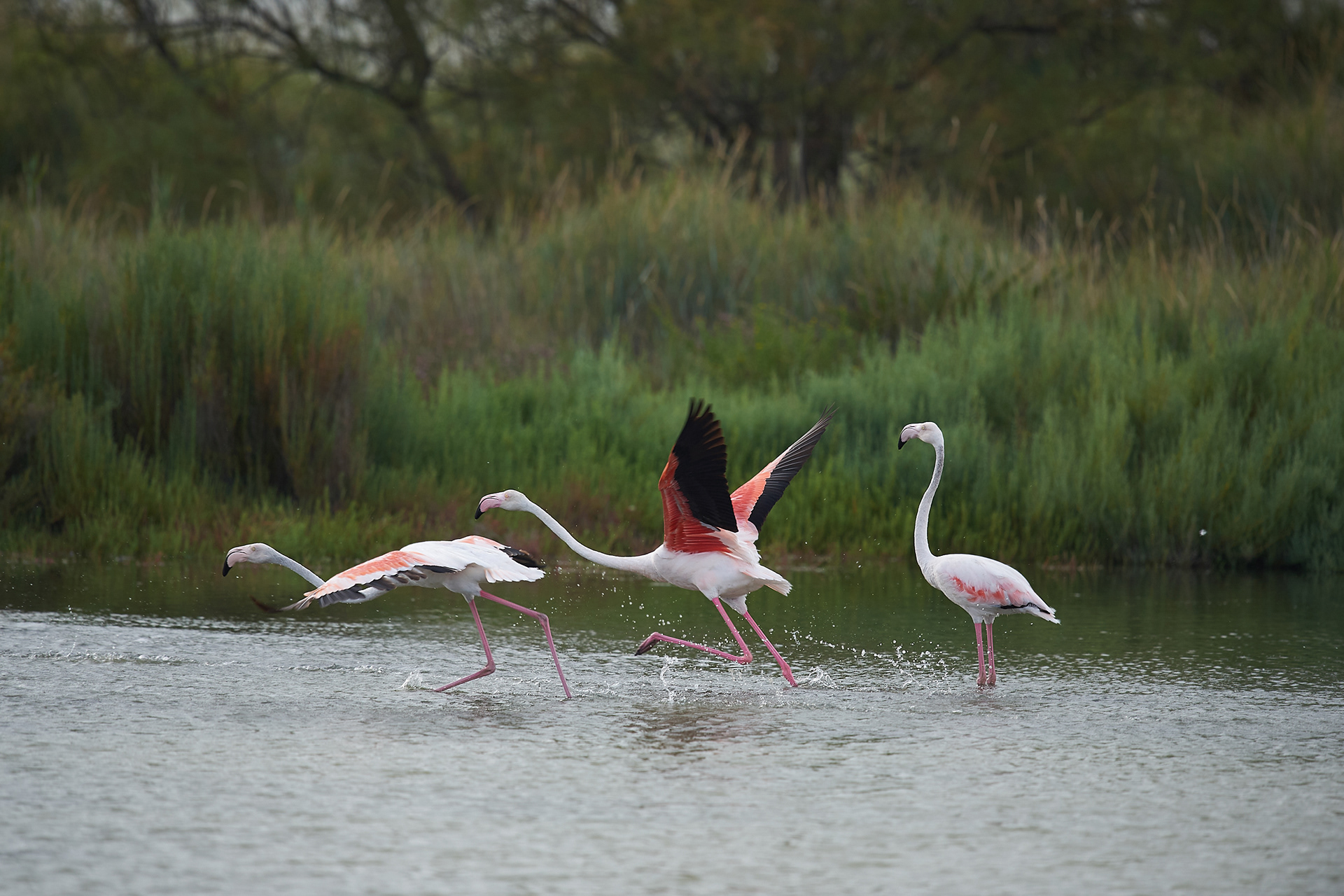
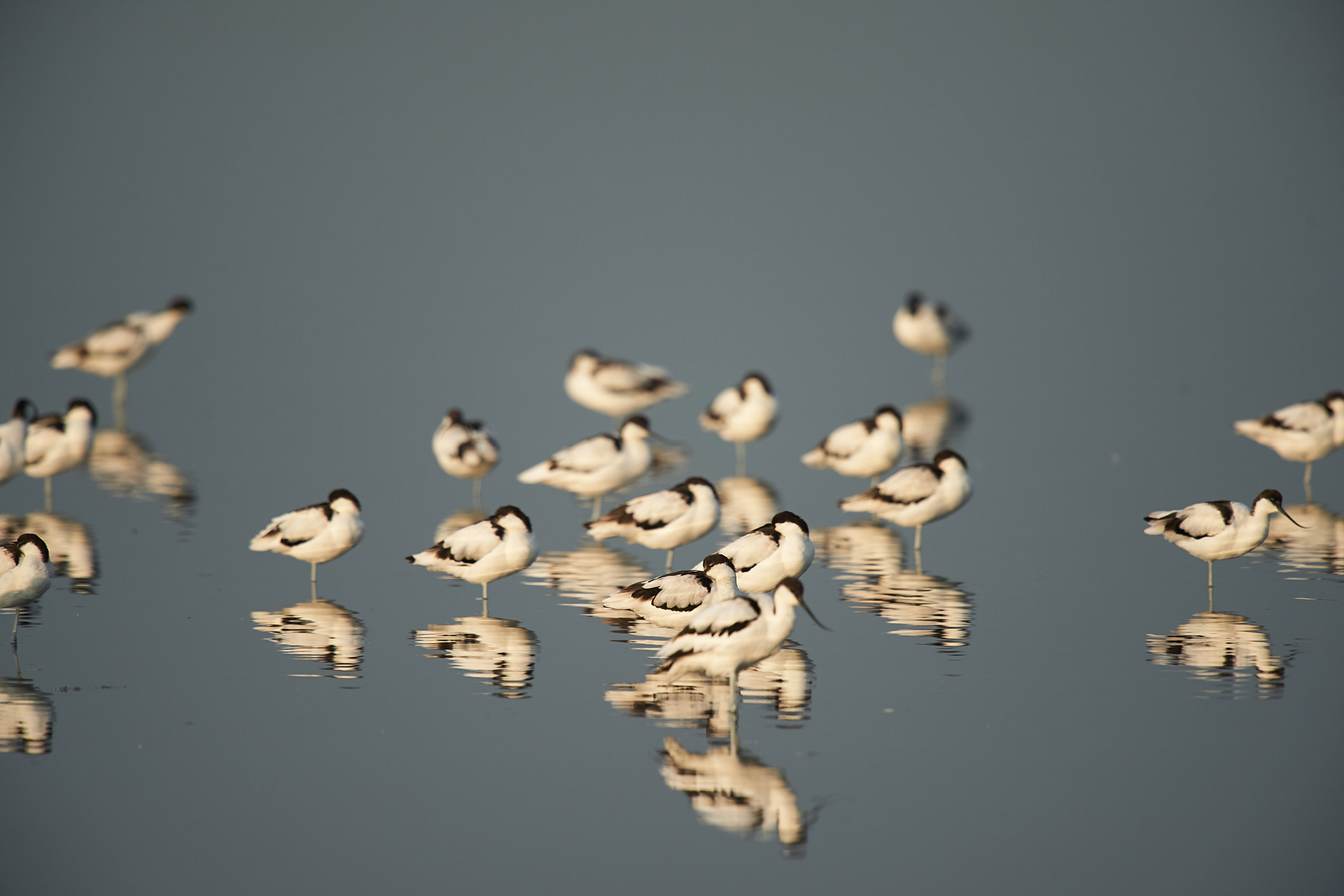
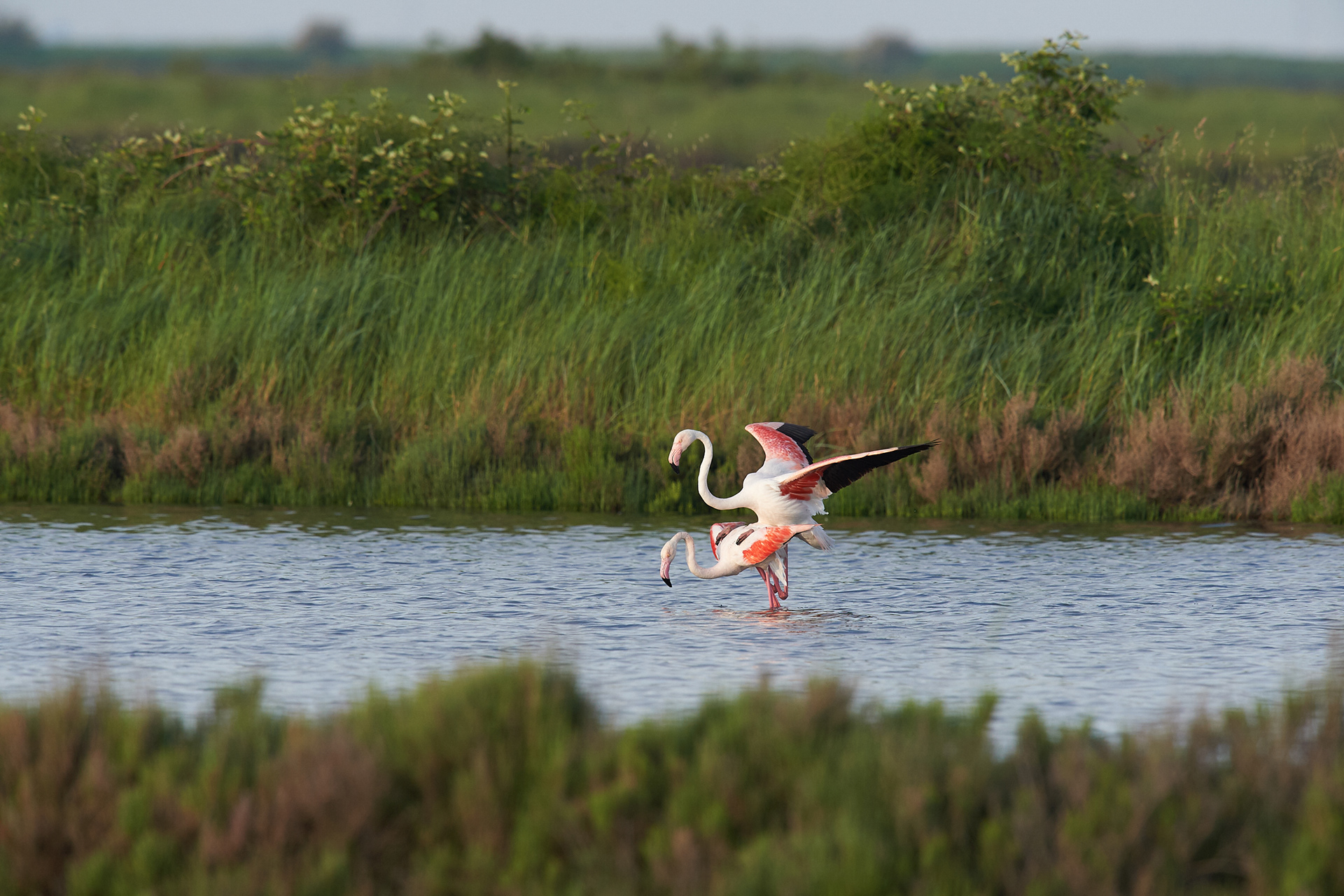
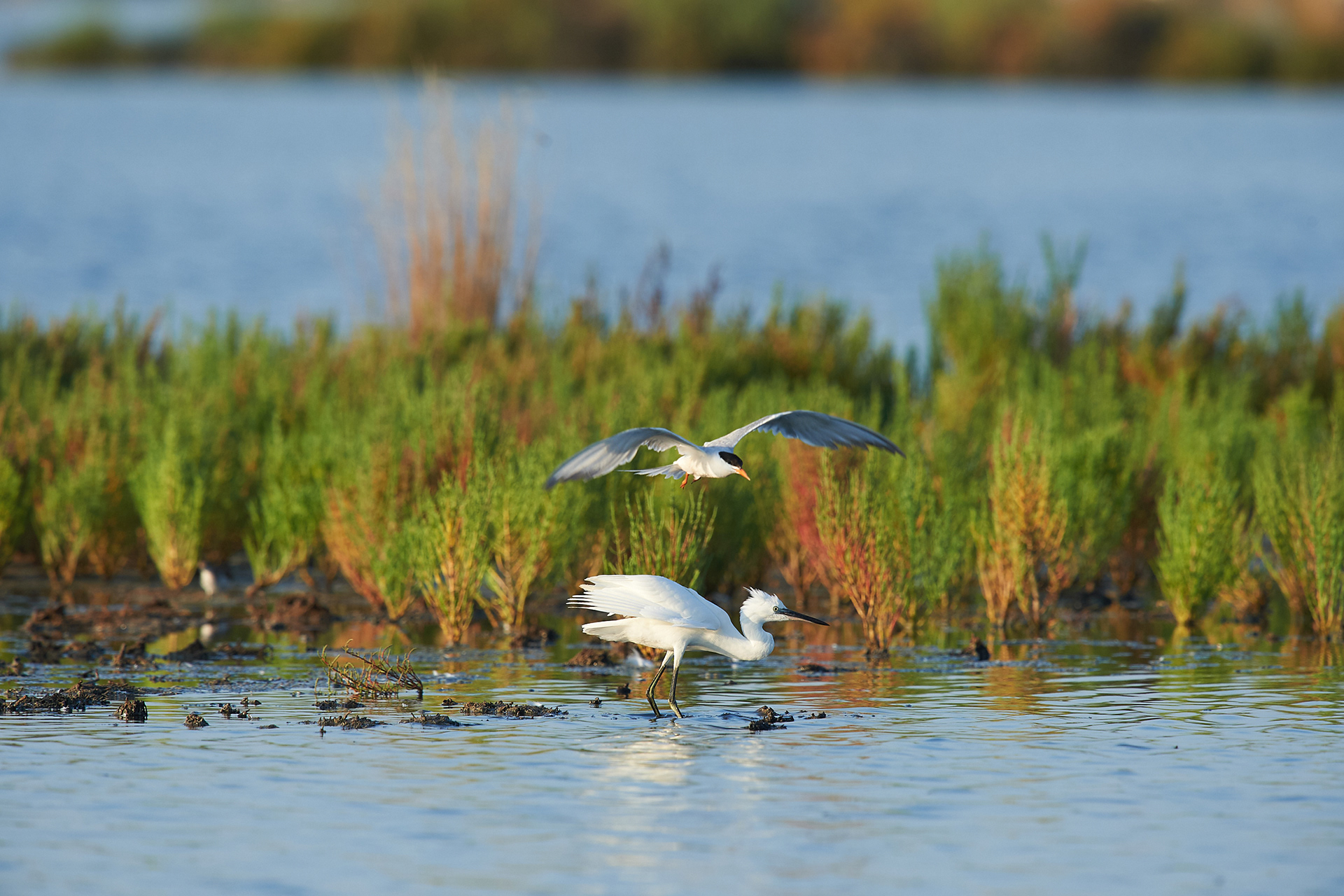
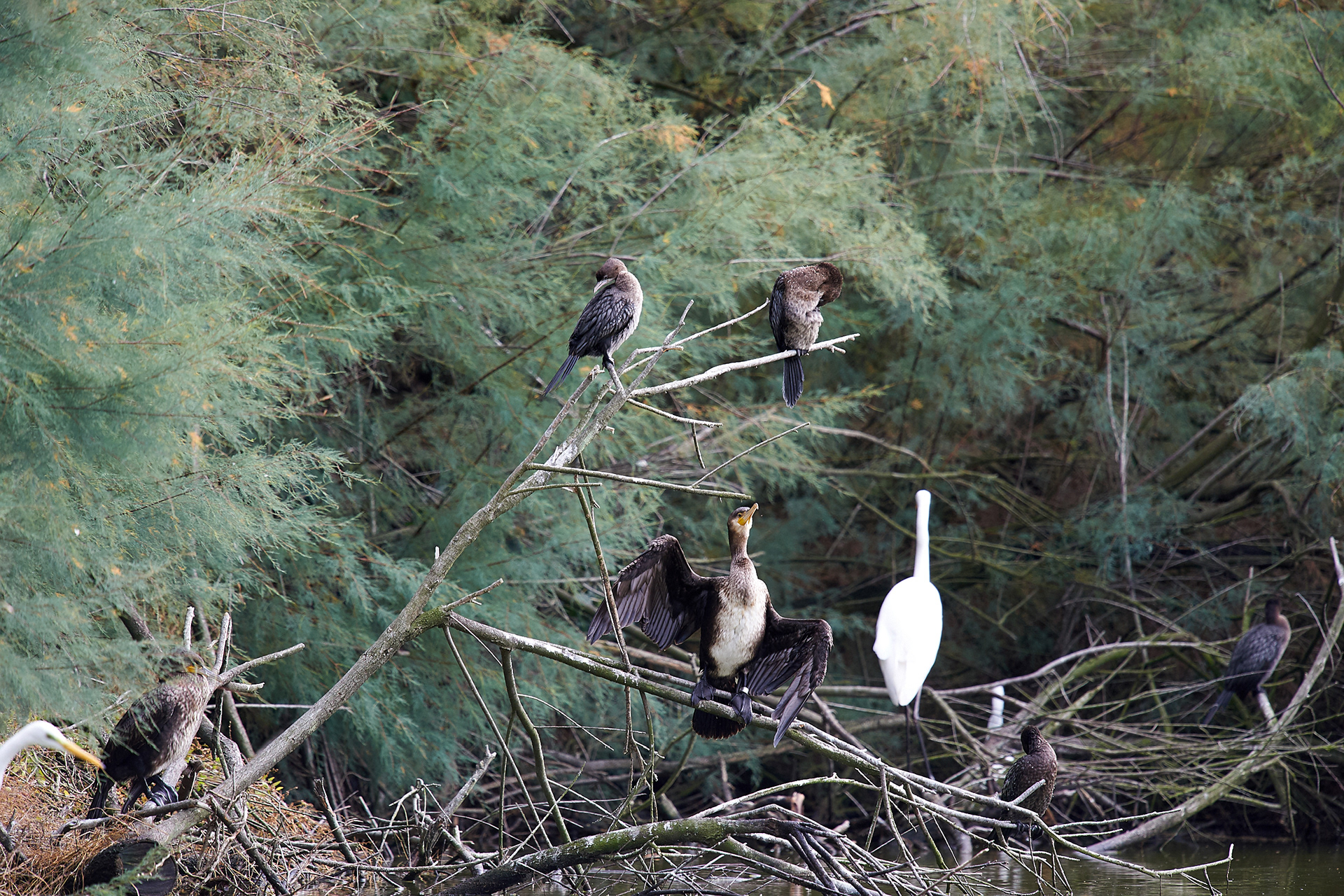
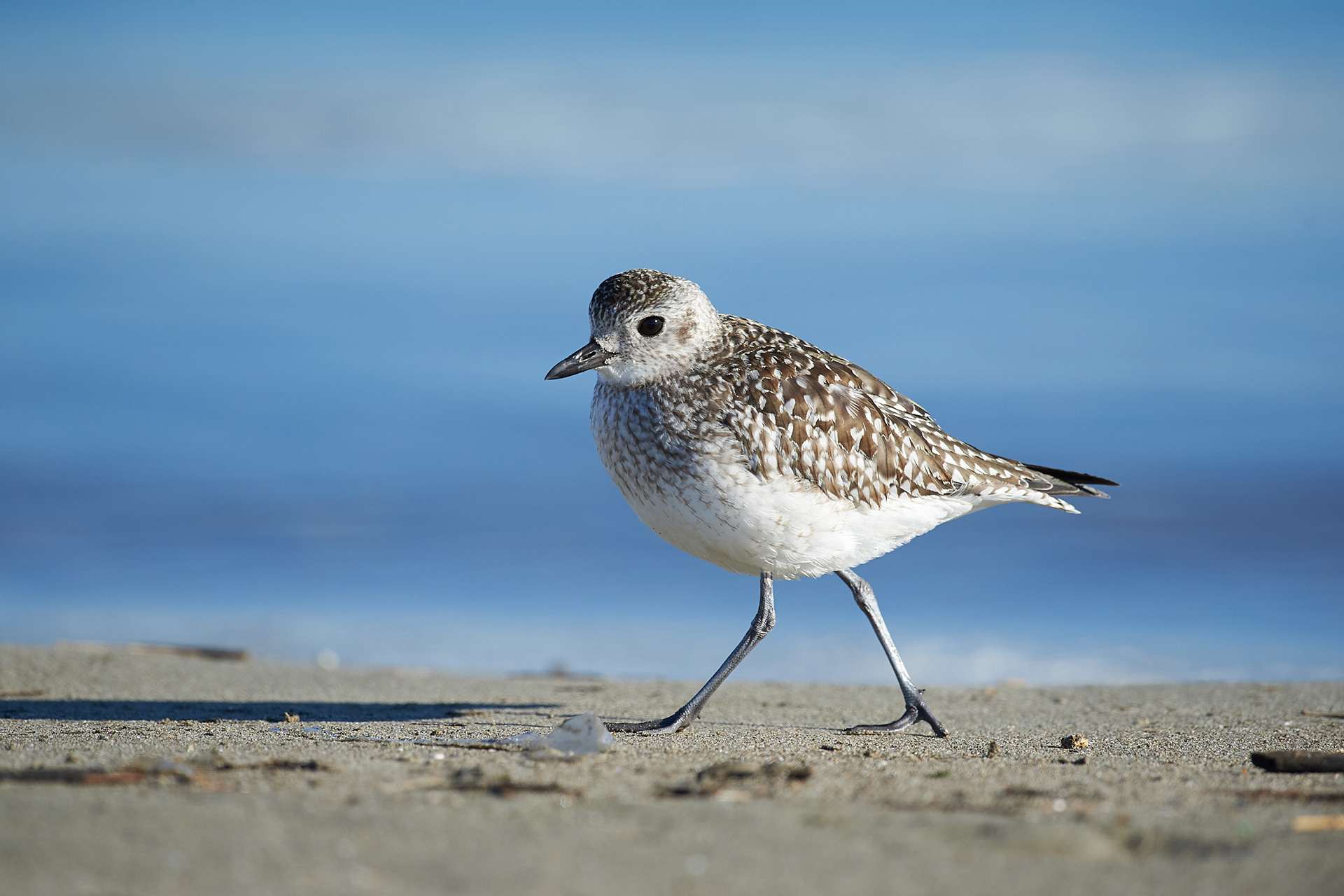
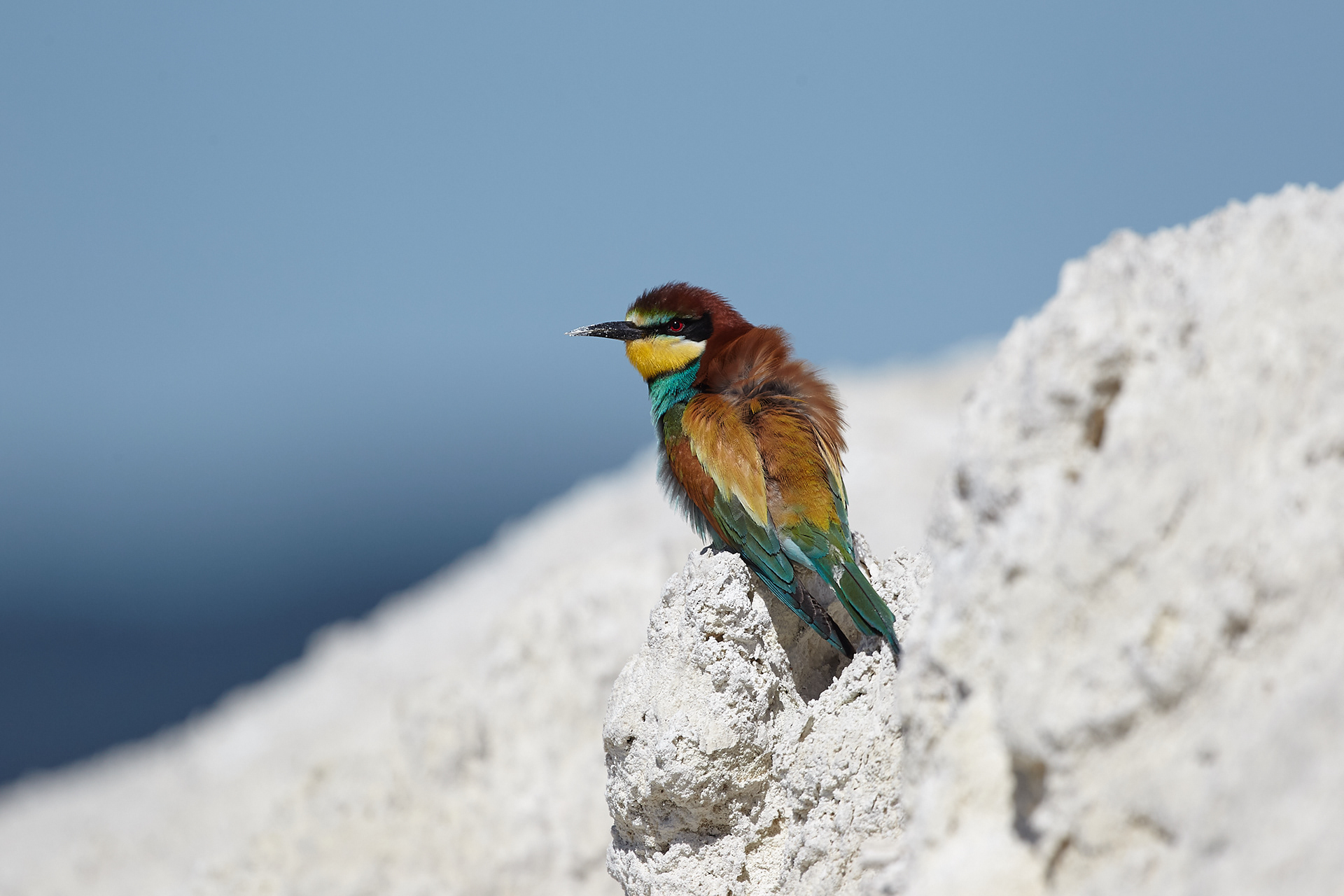
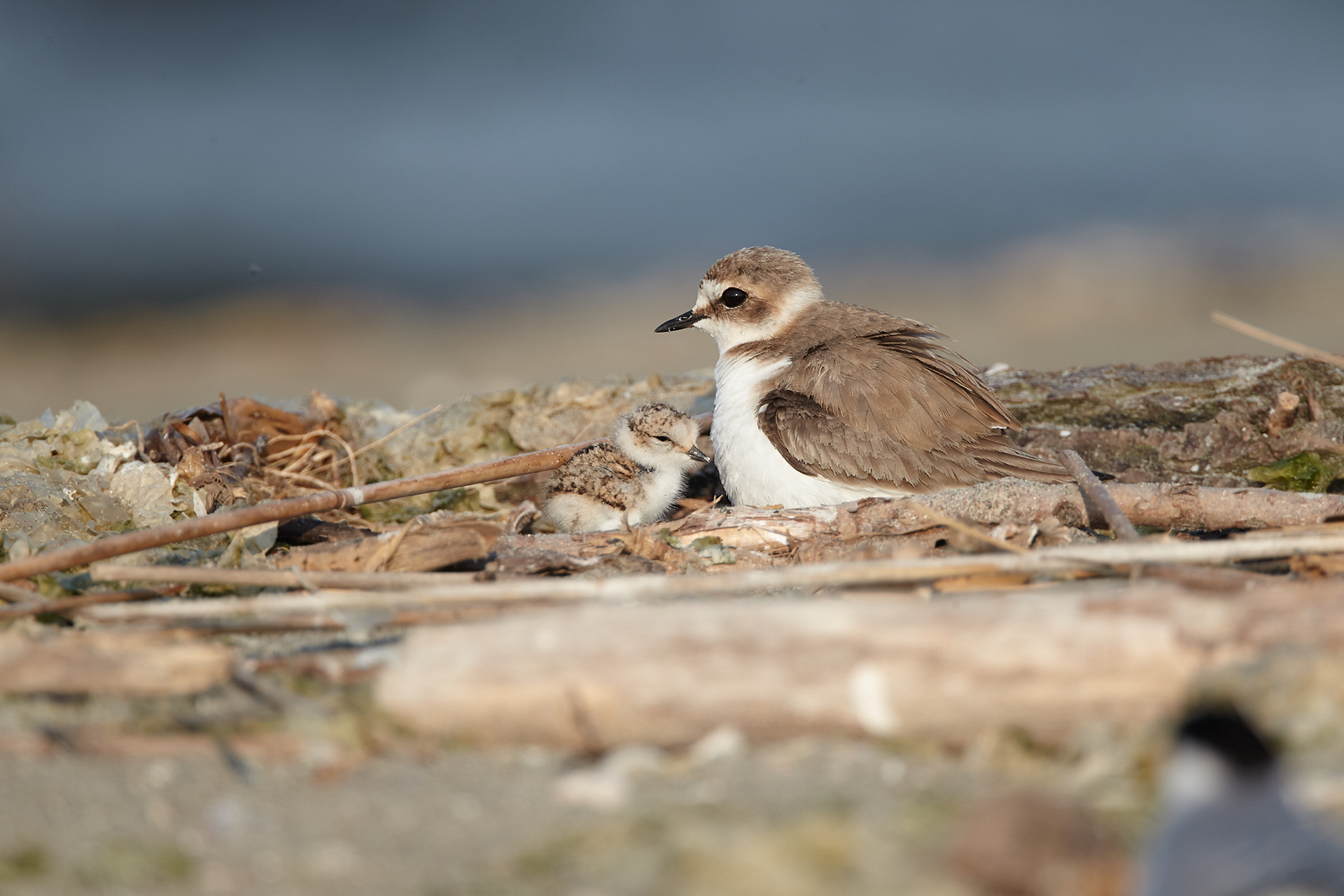




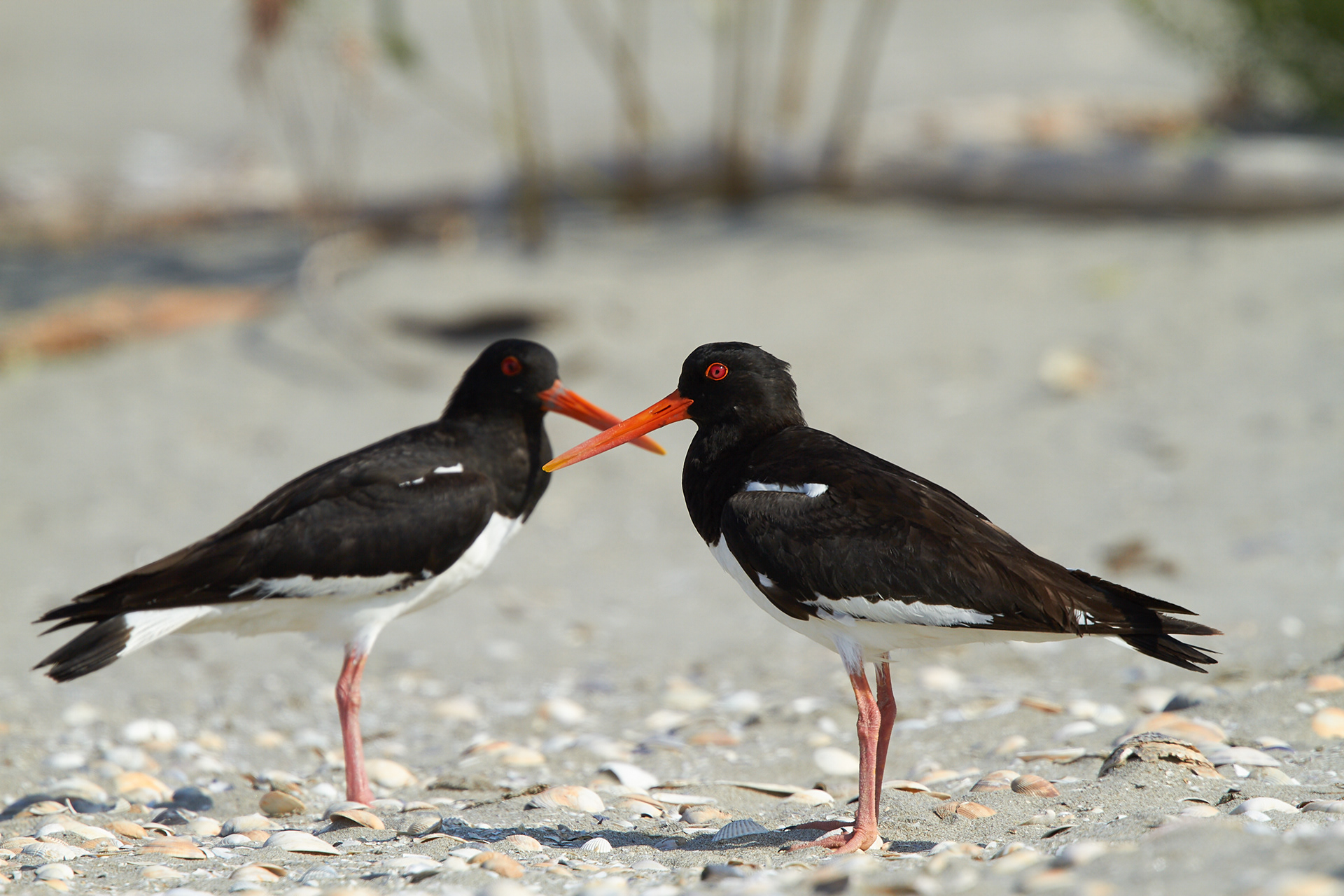


Paesaggi del Delta - Delta landscapes

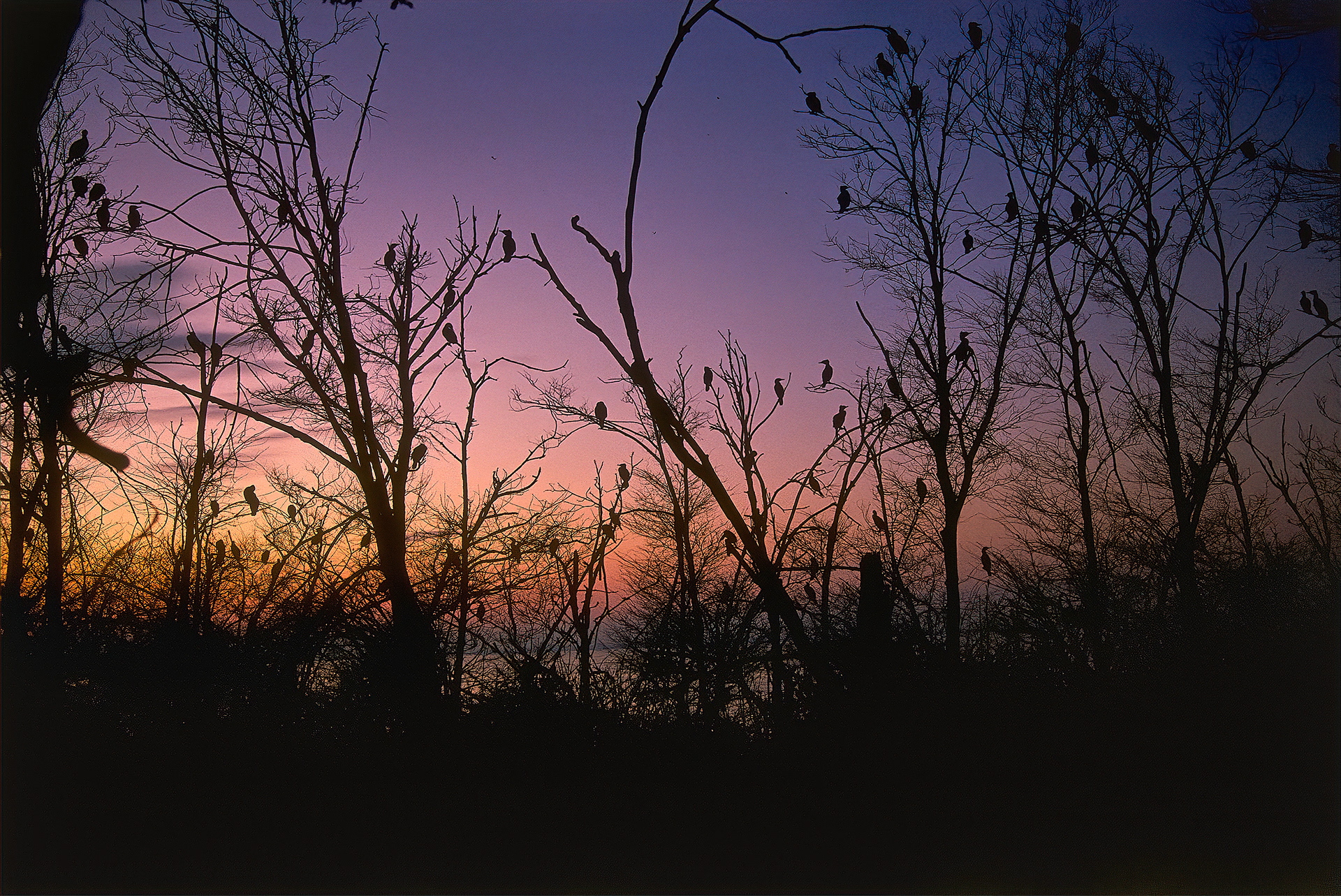
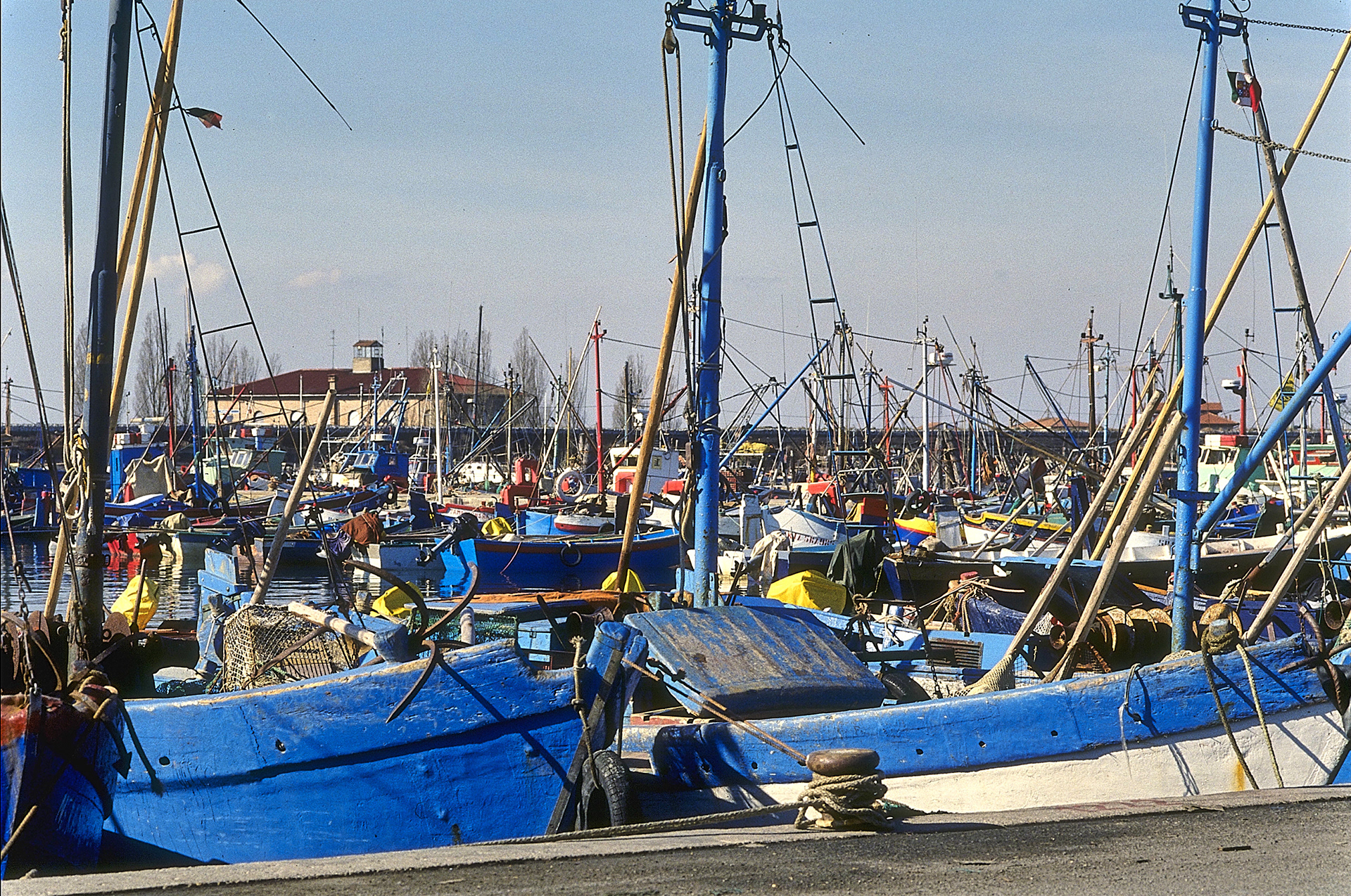
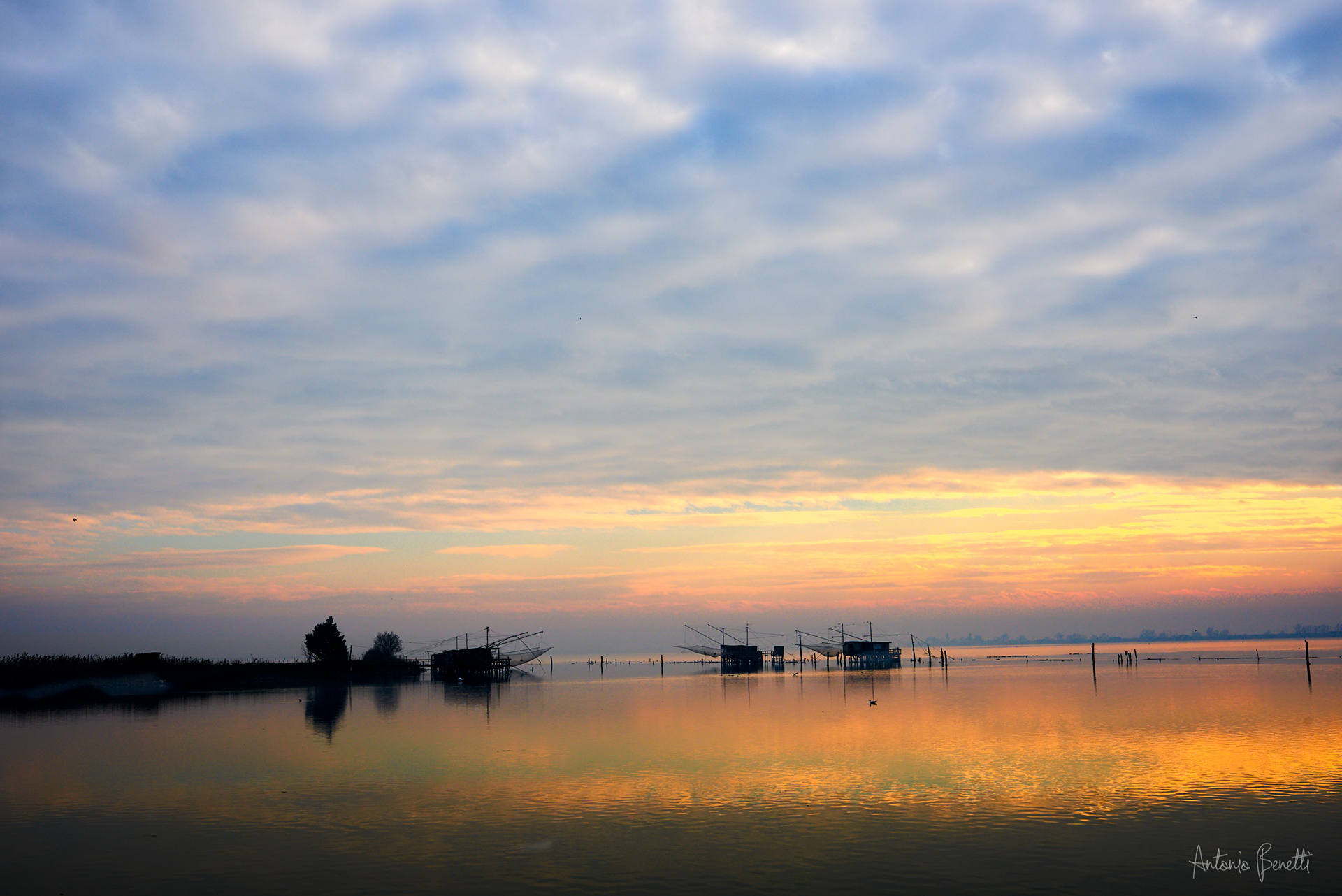

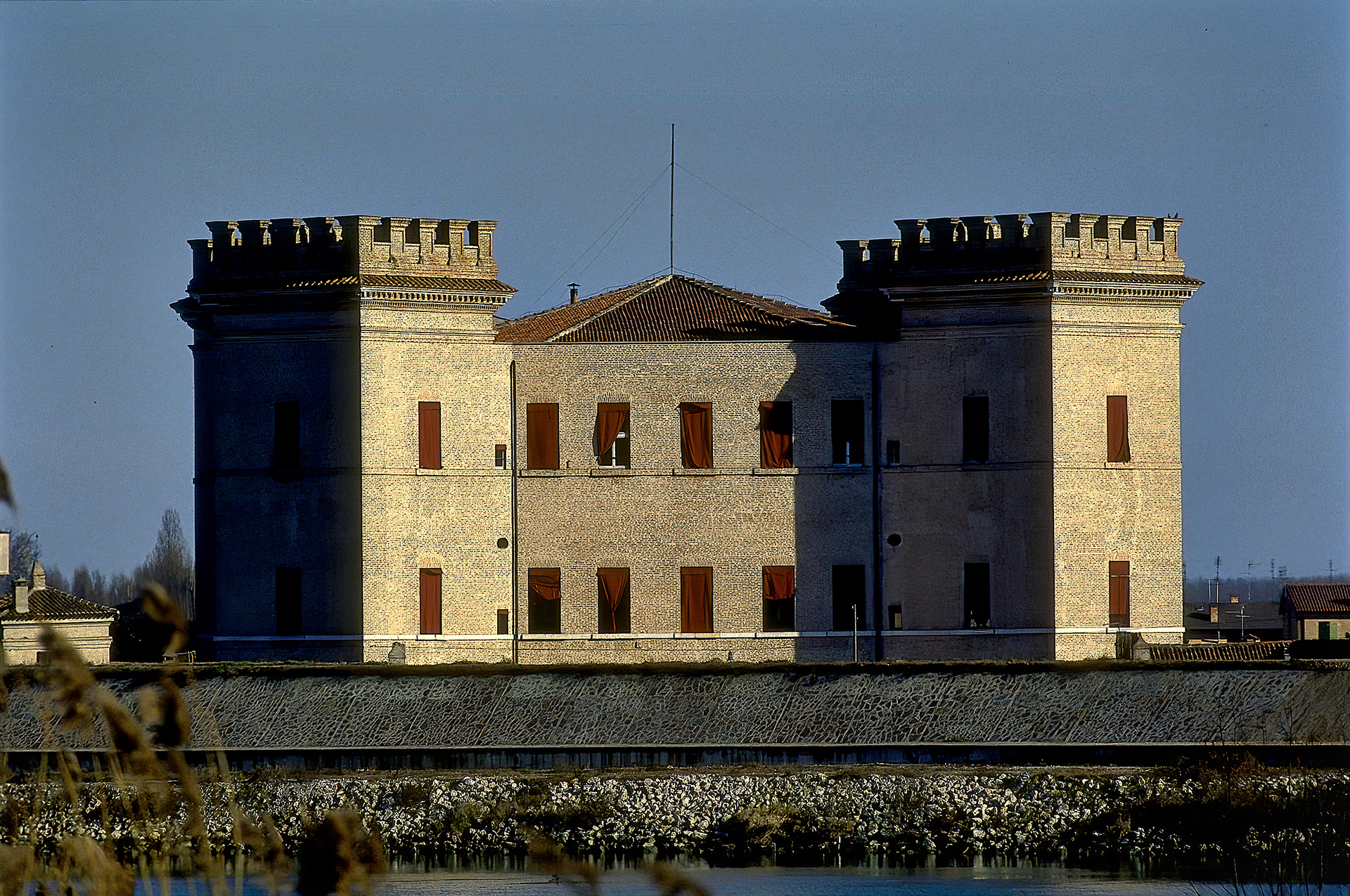

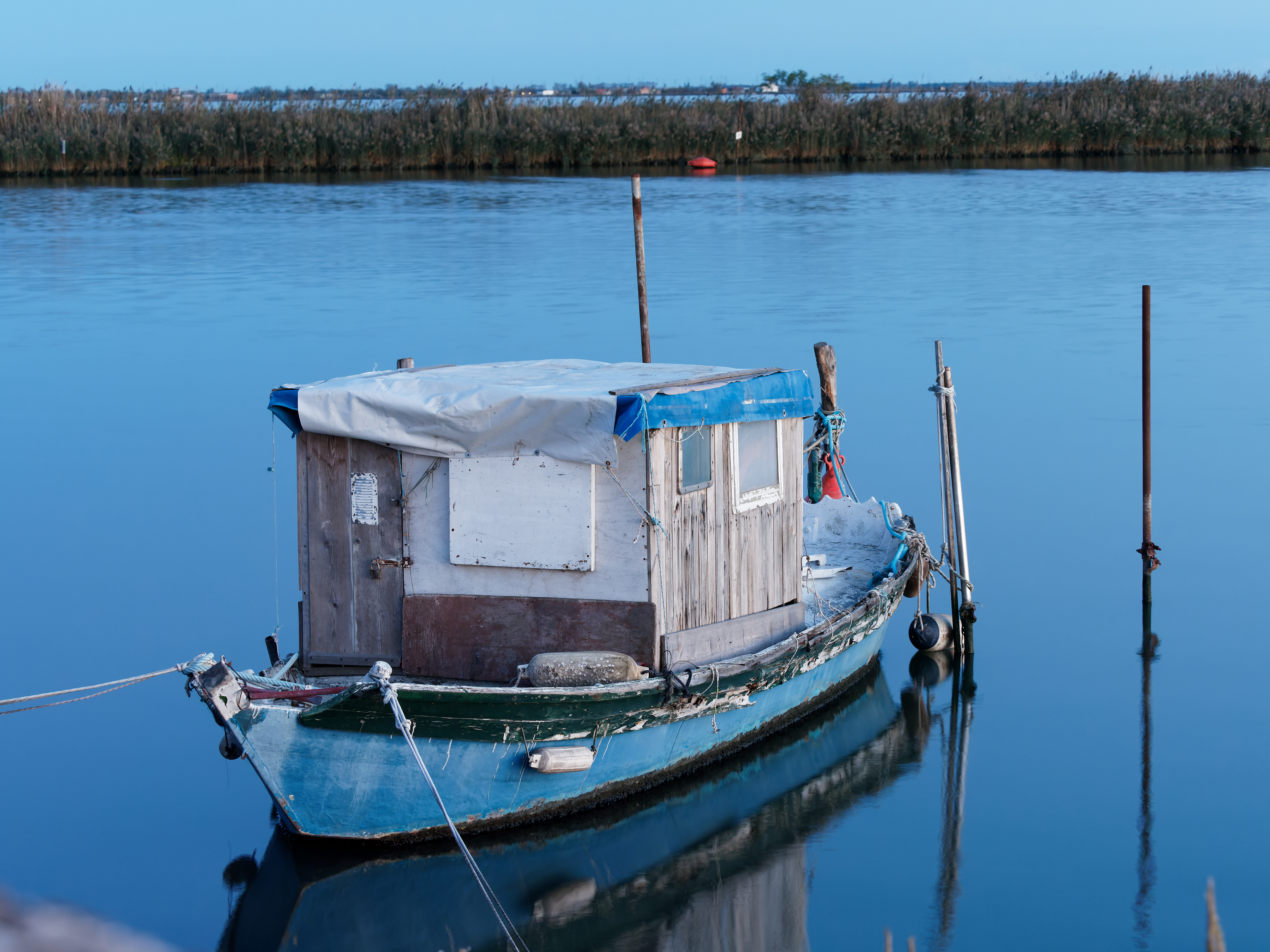
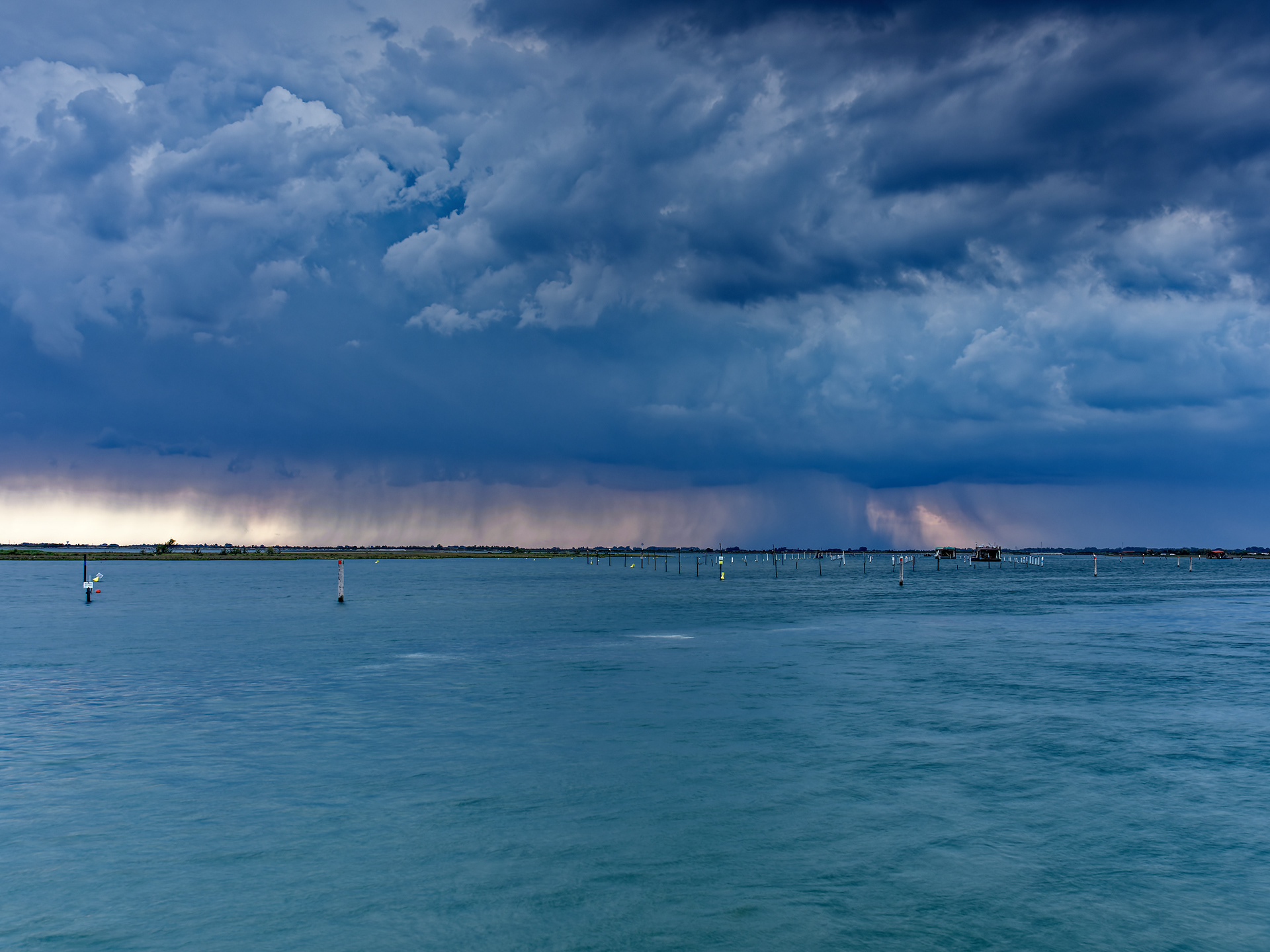

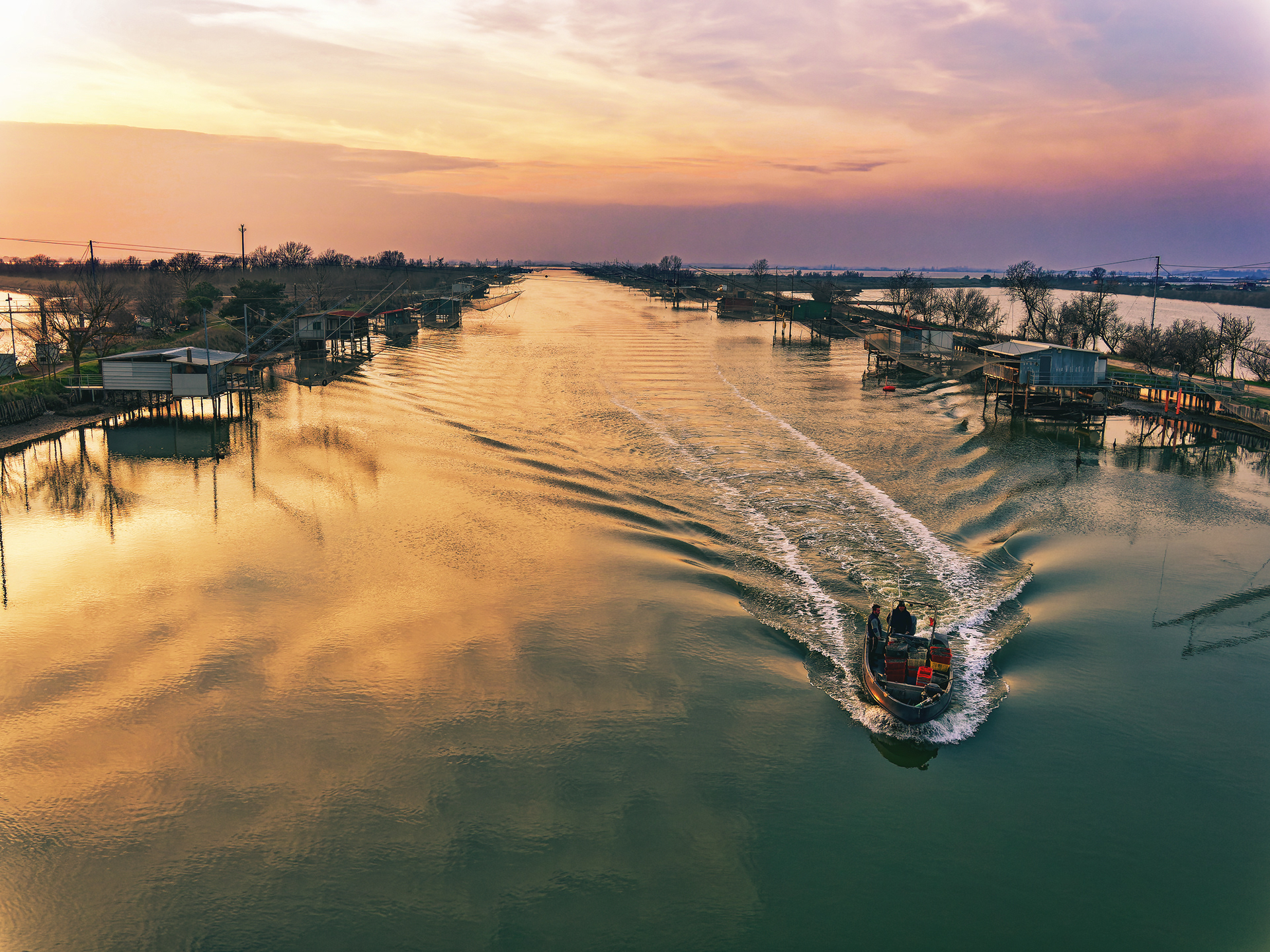
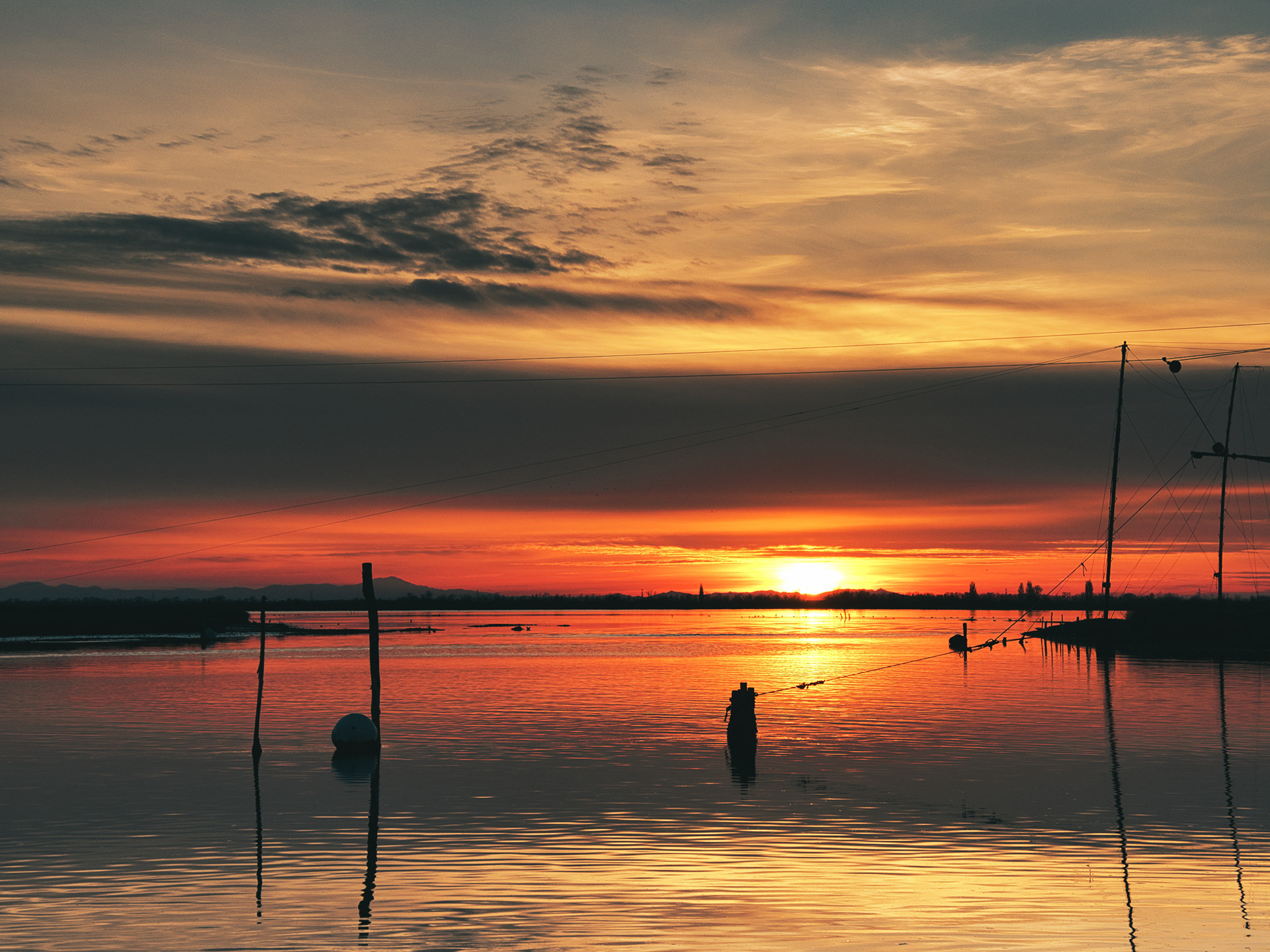
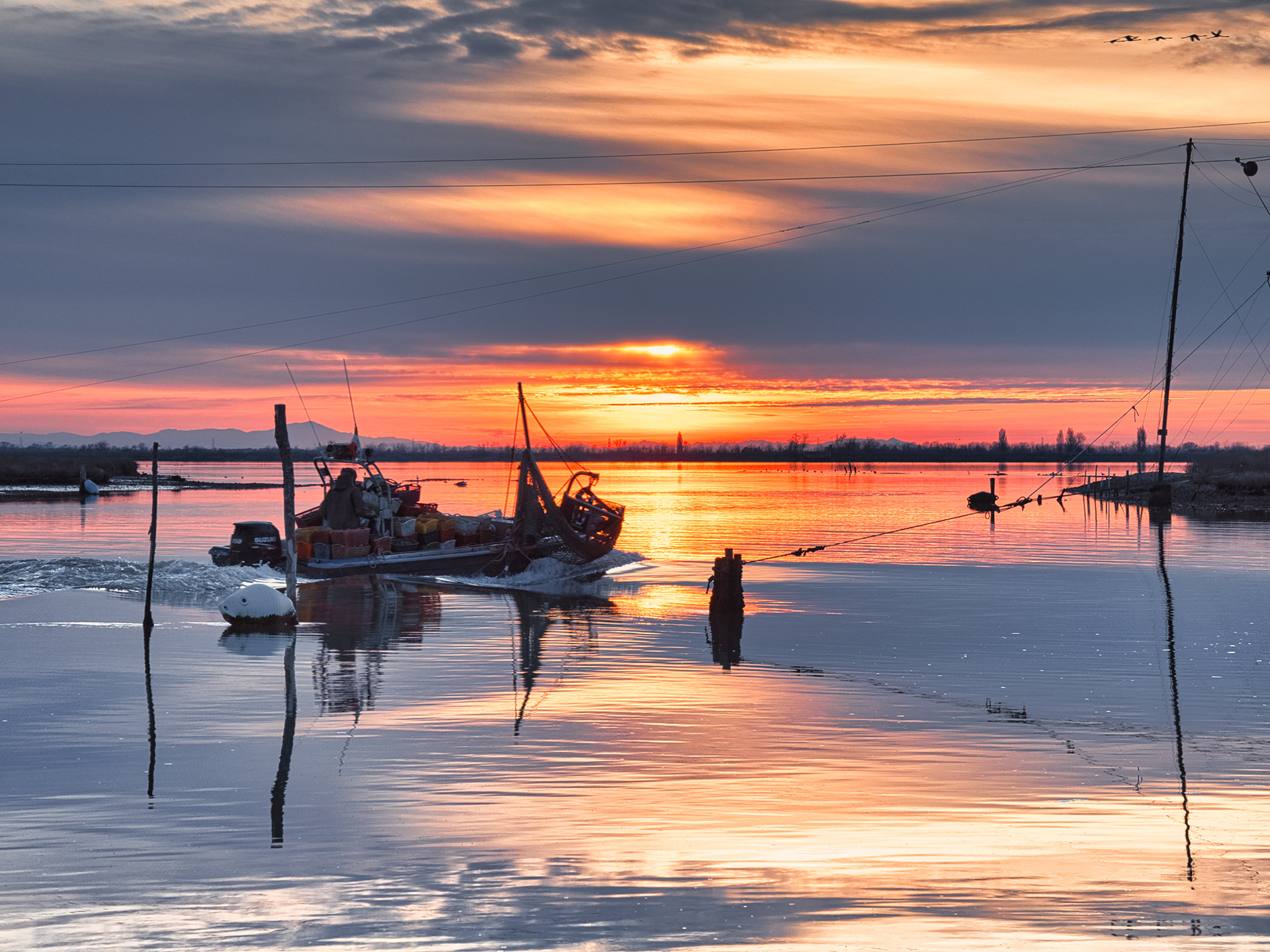


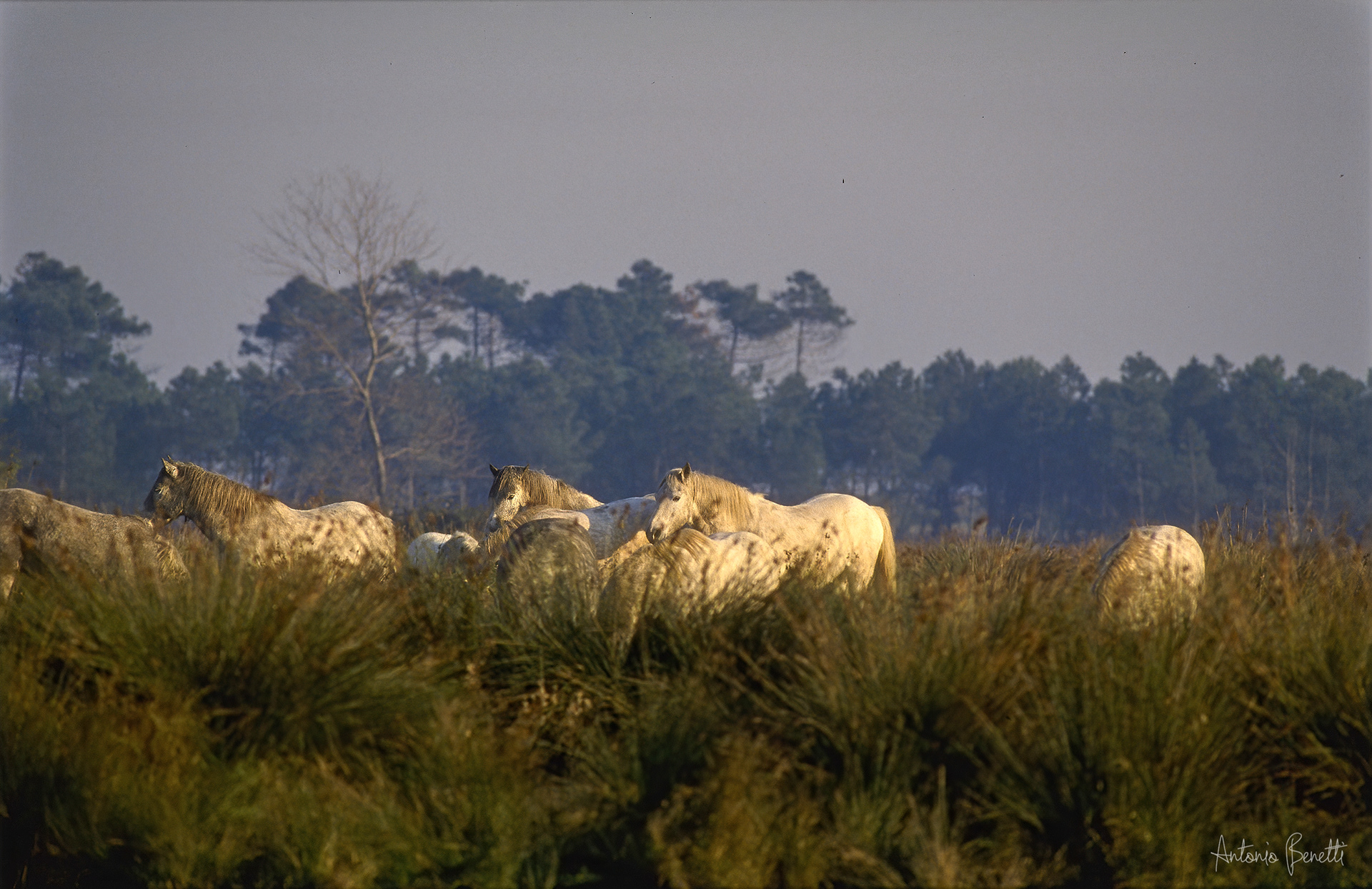

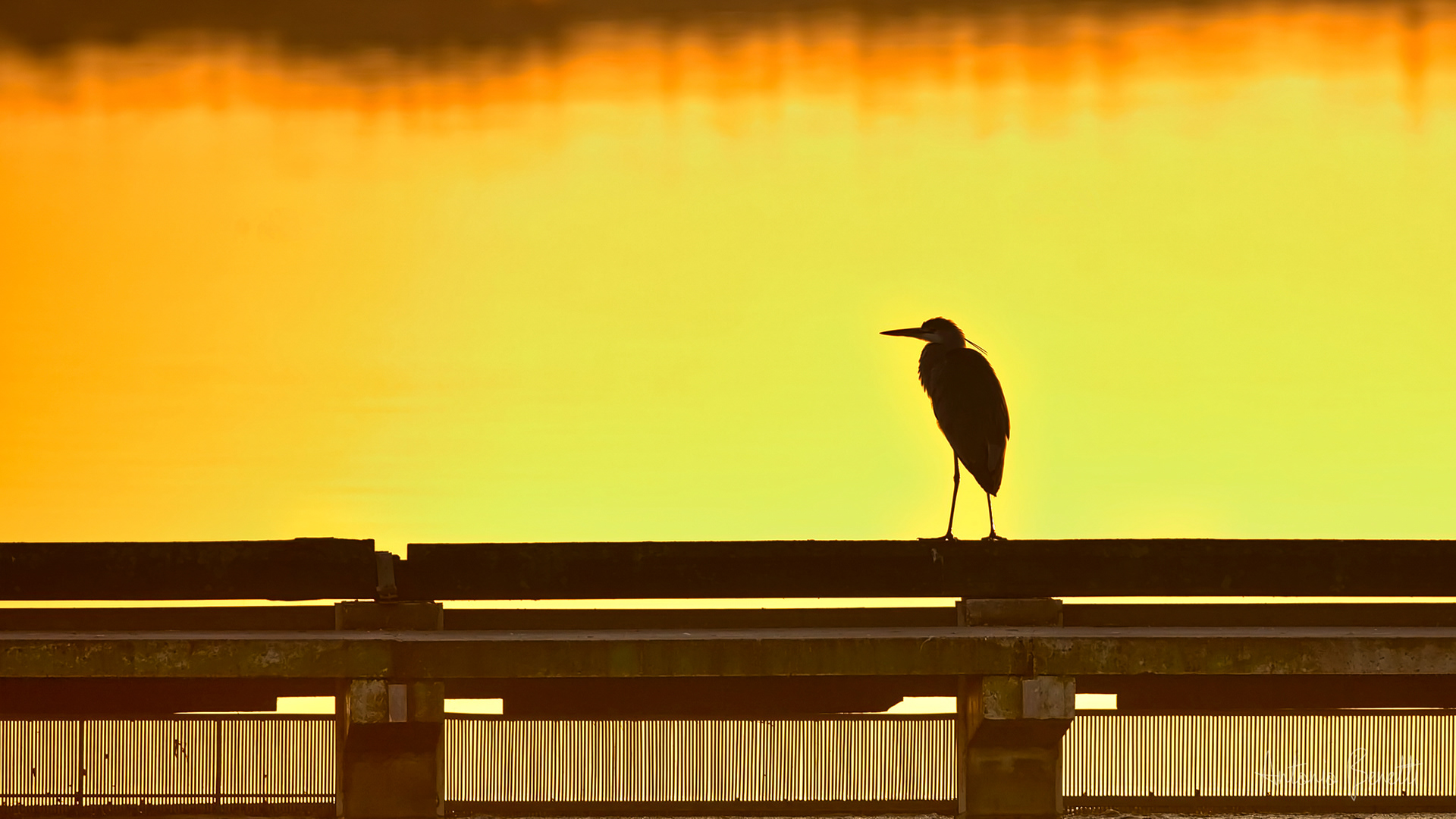
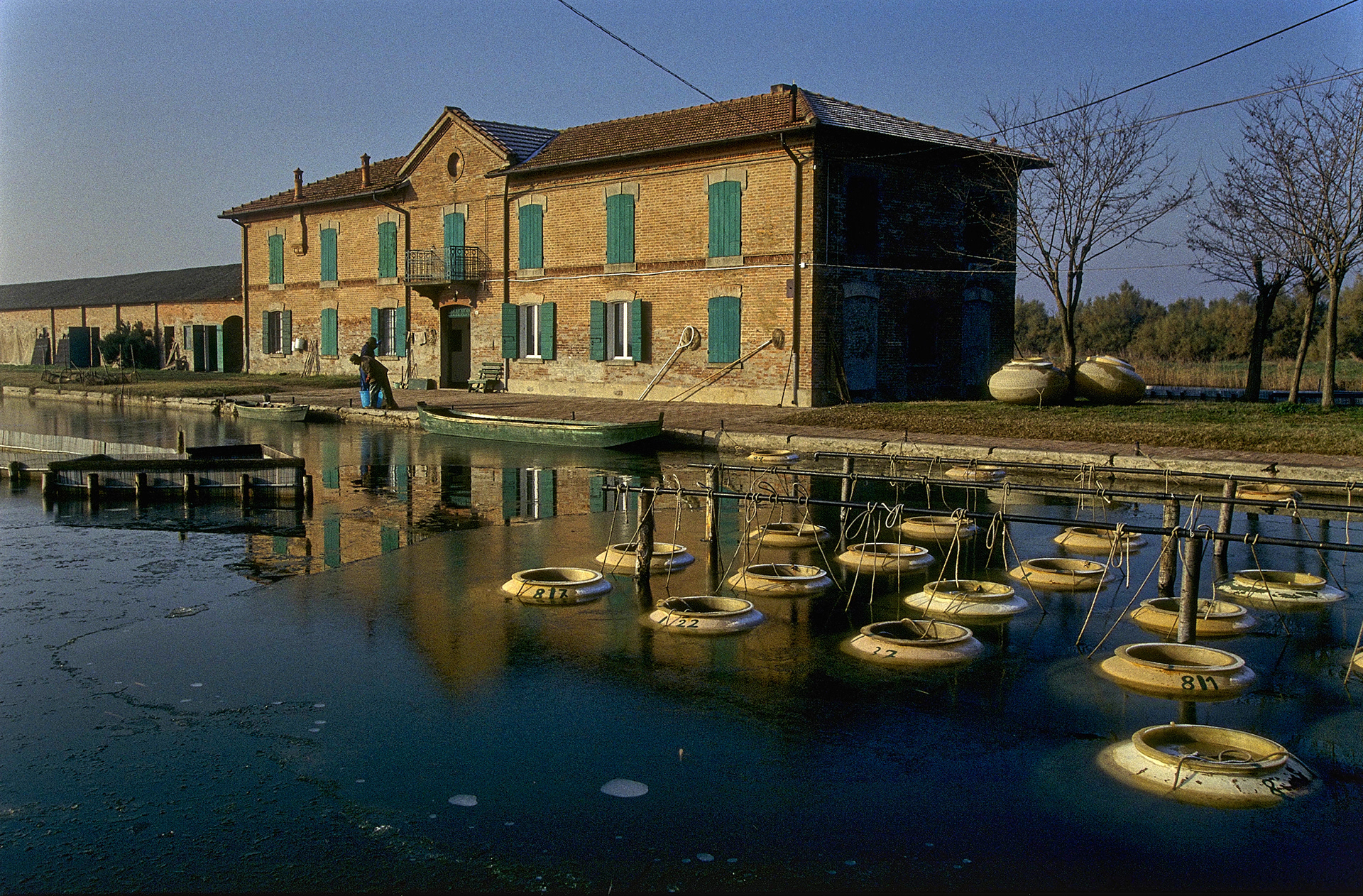
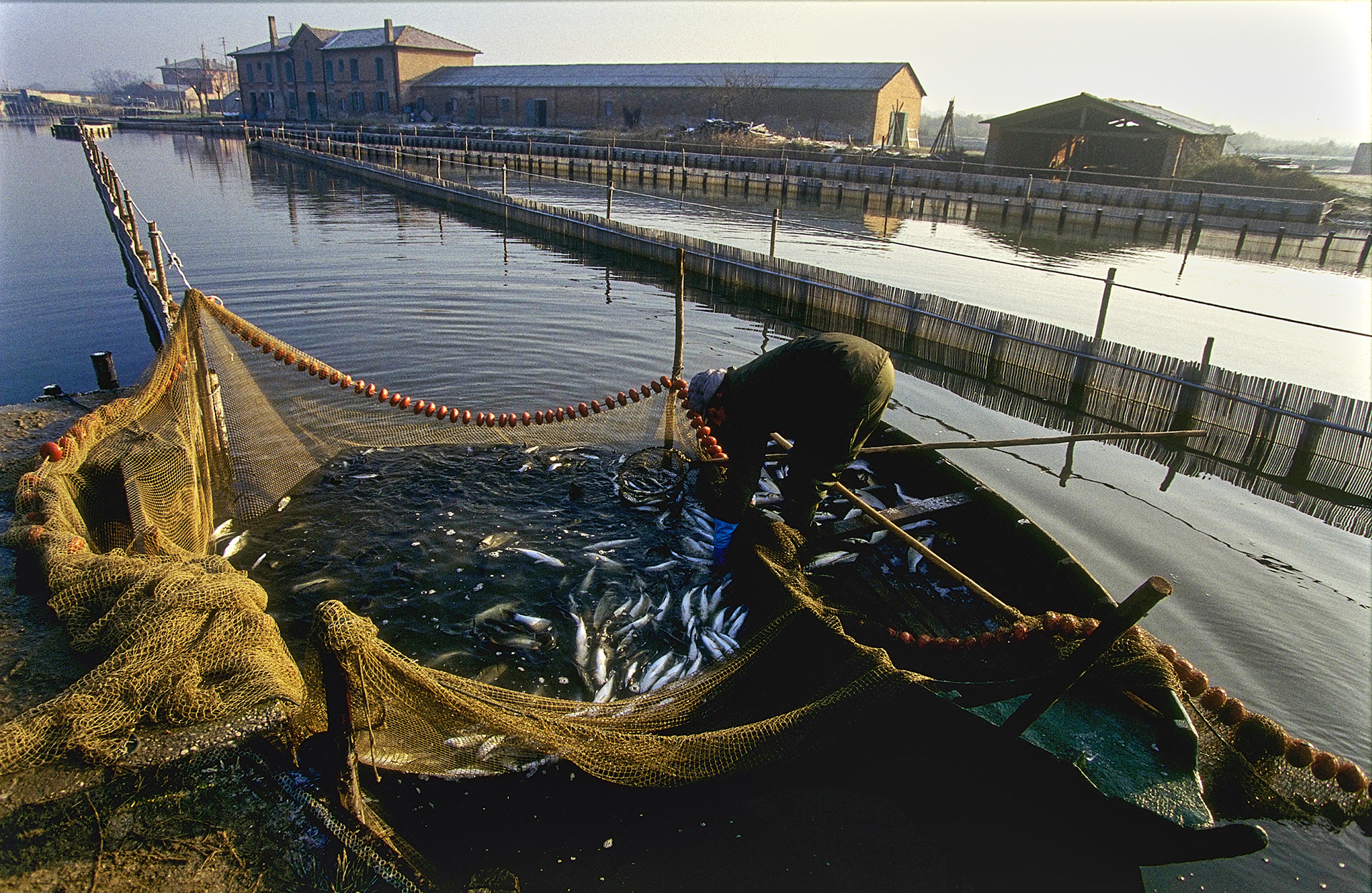


I casoni di valle
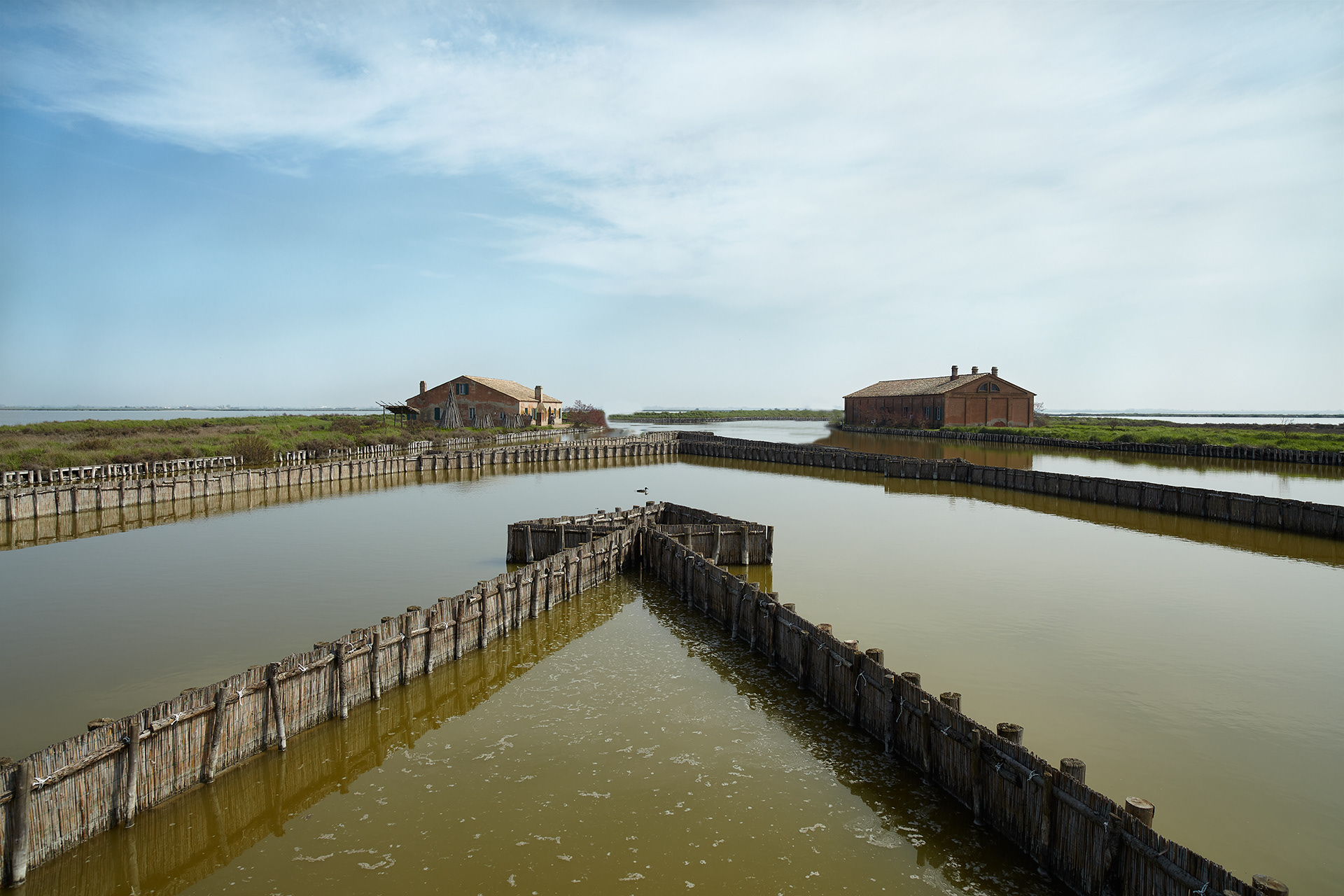

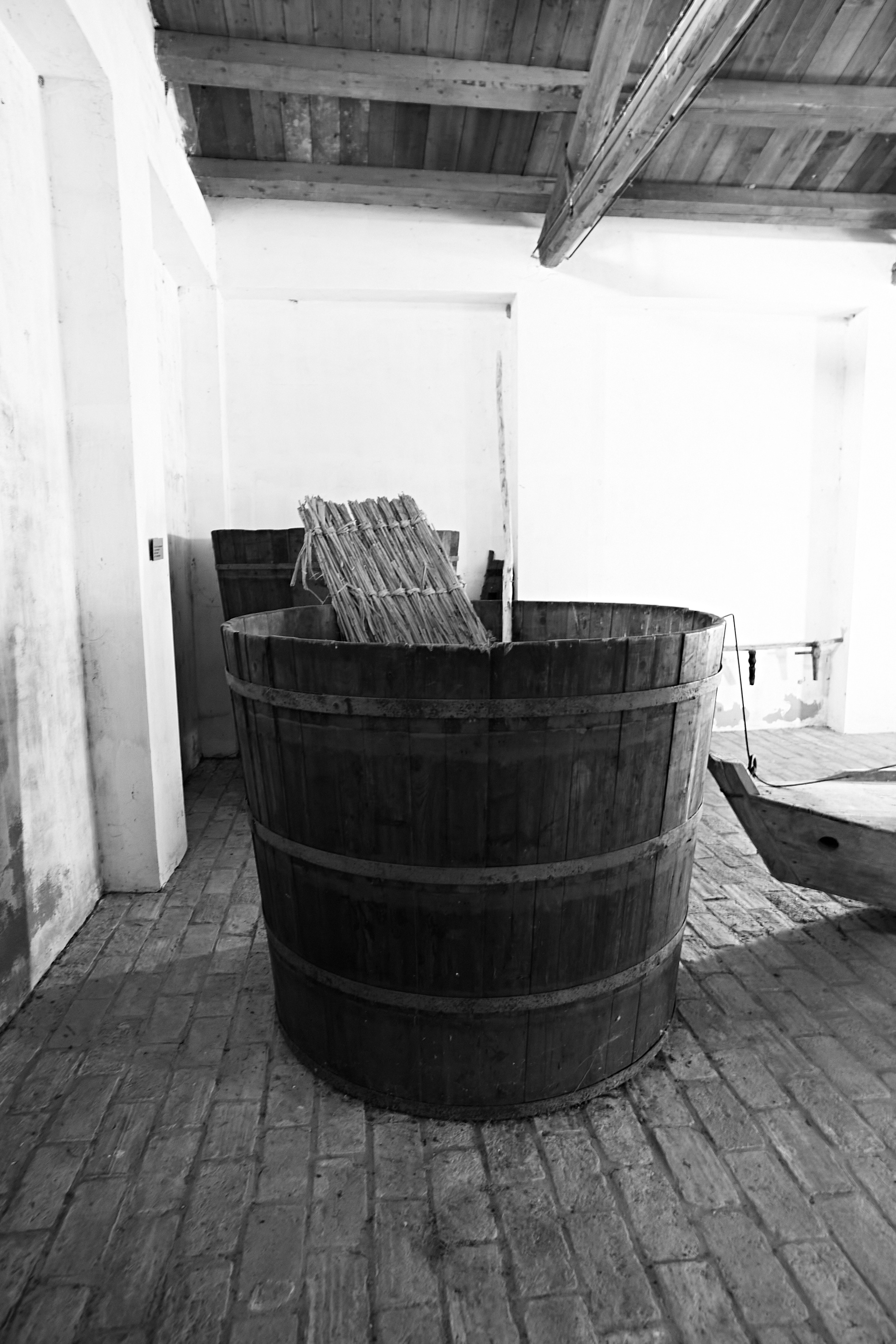

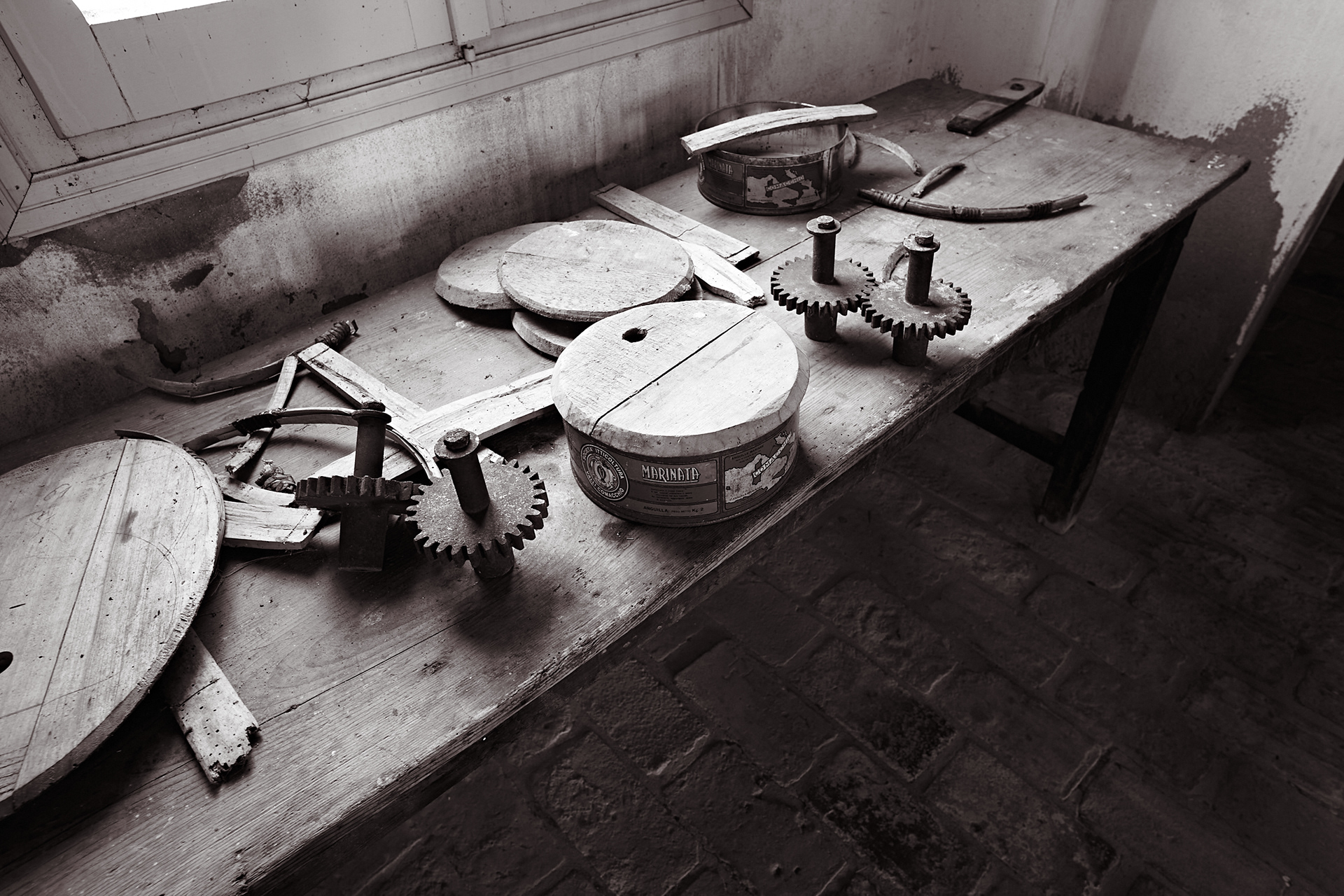
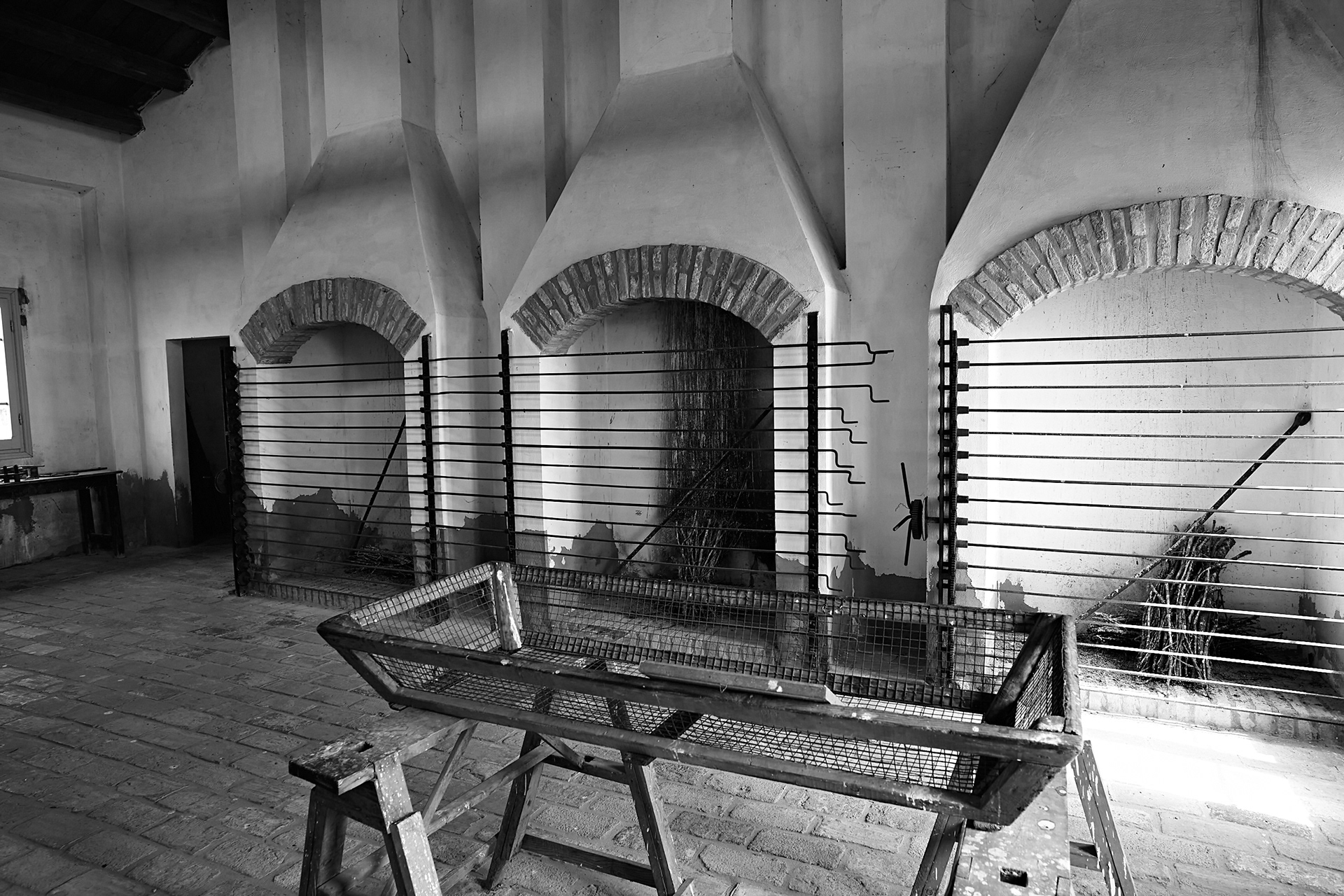
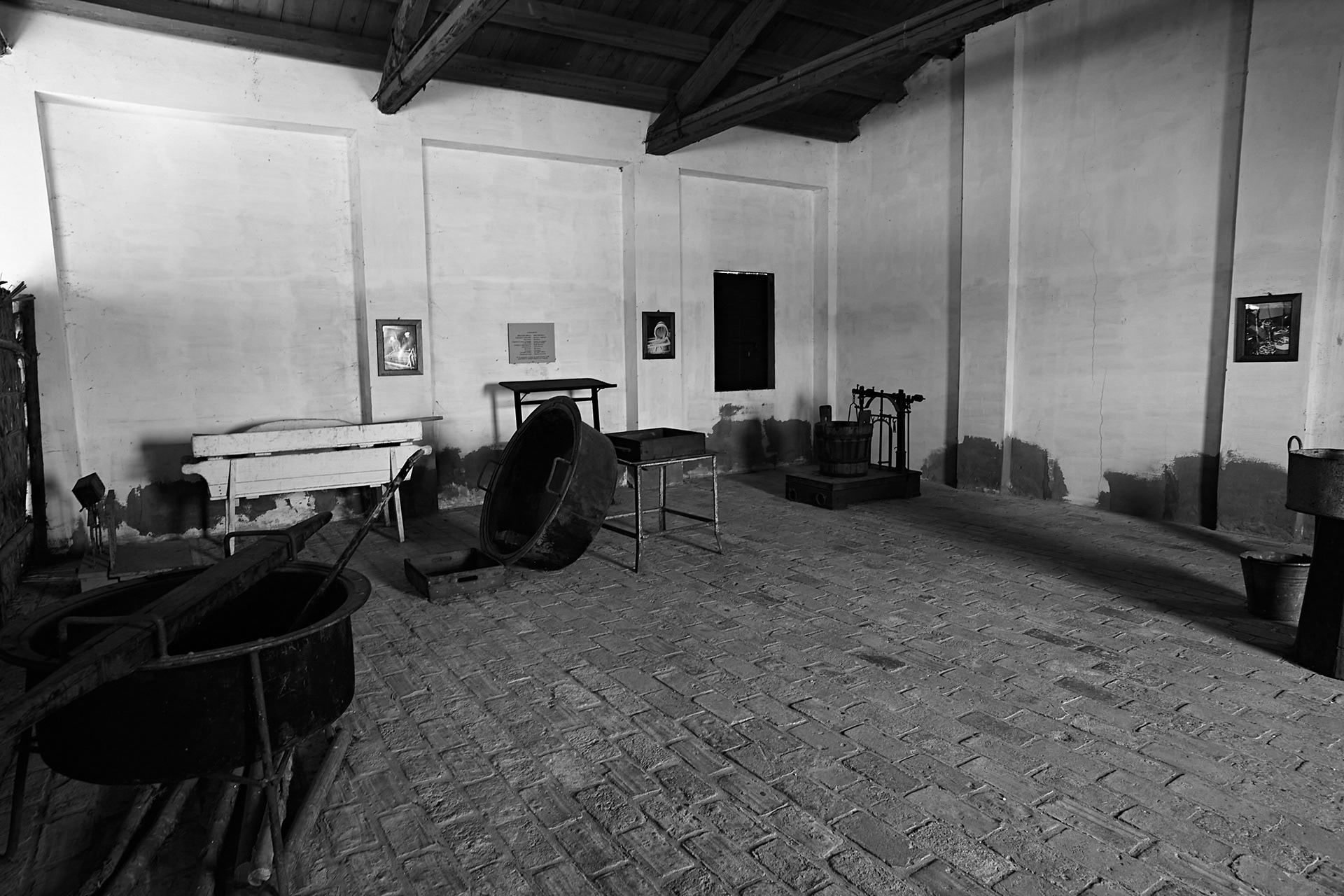
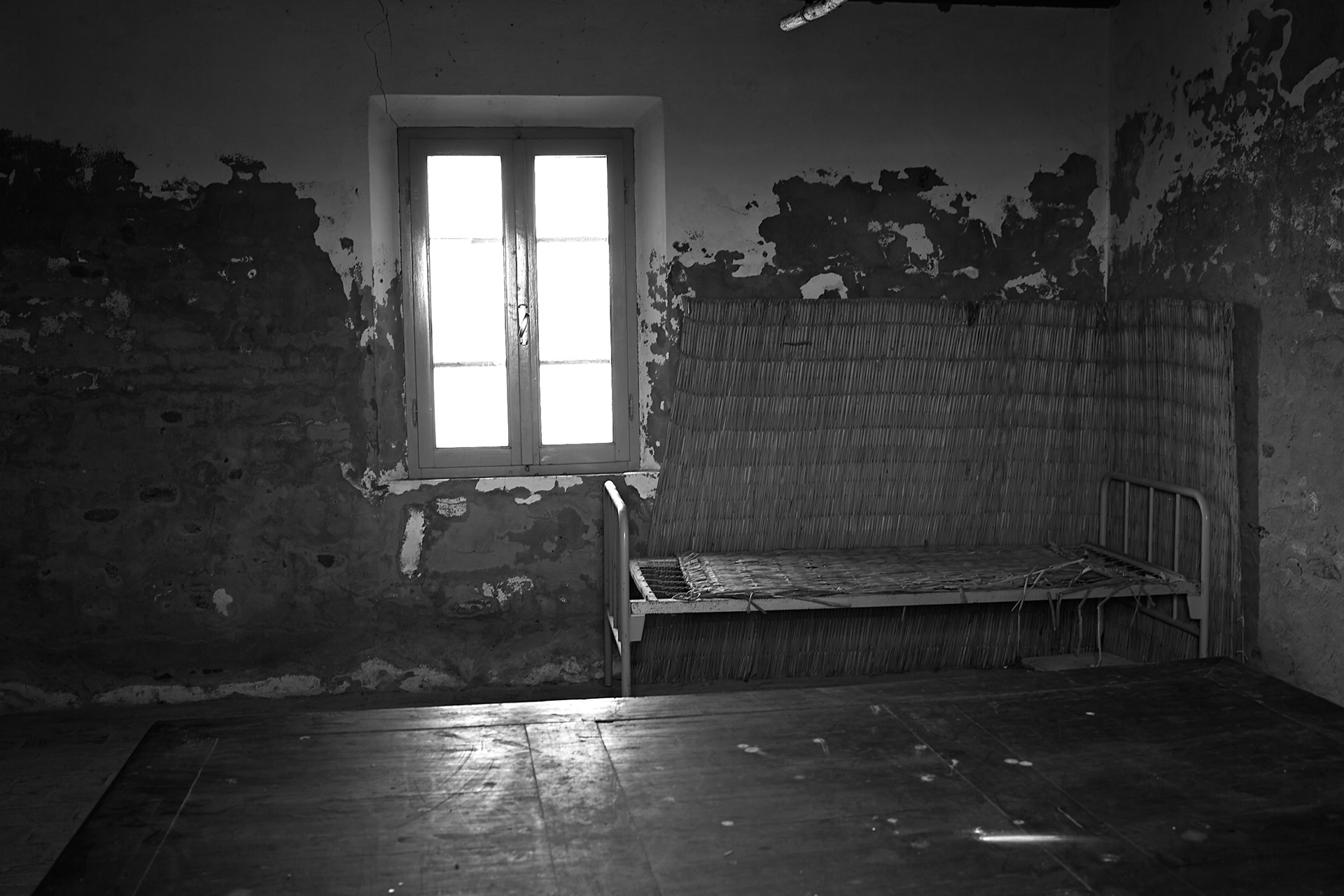
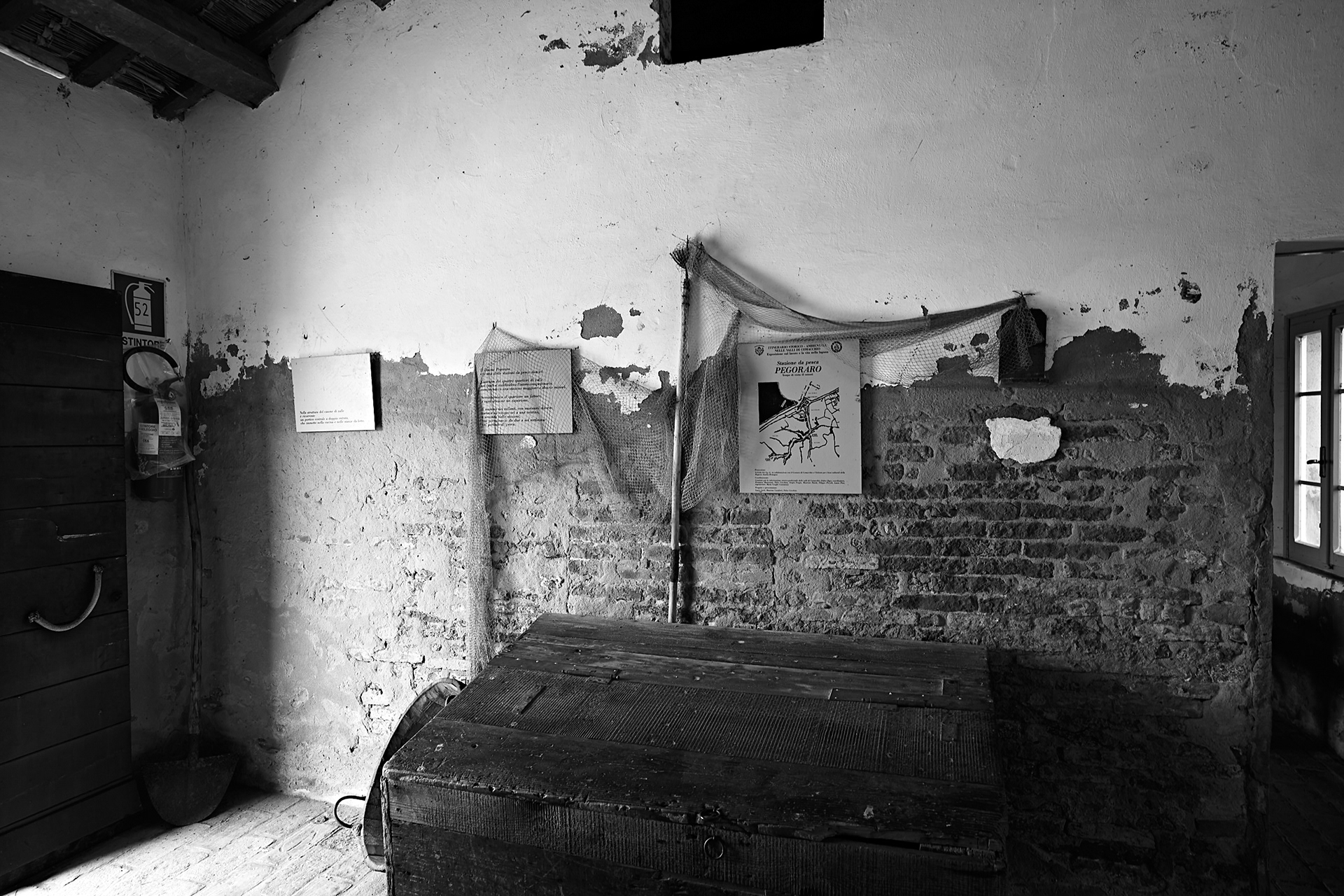


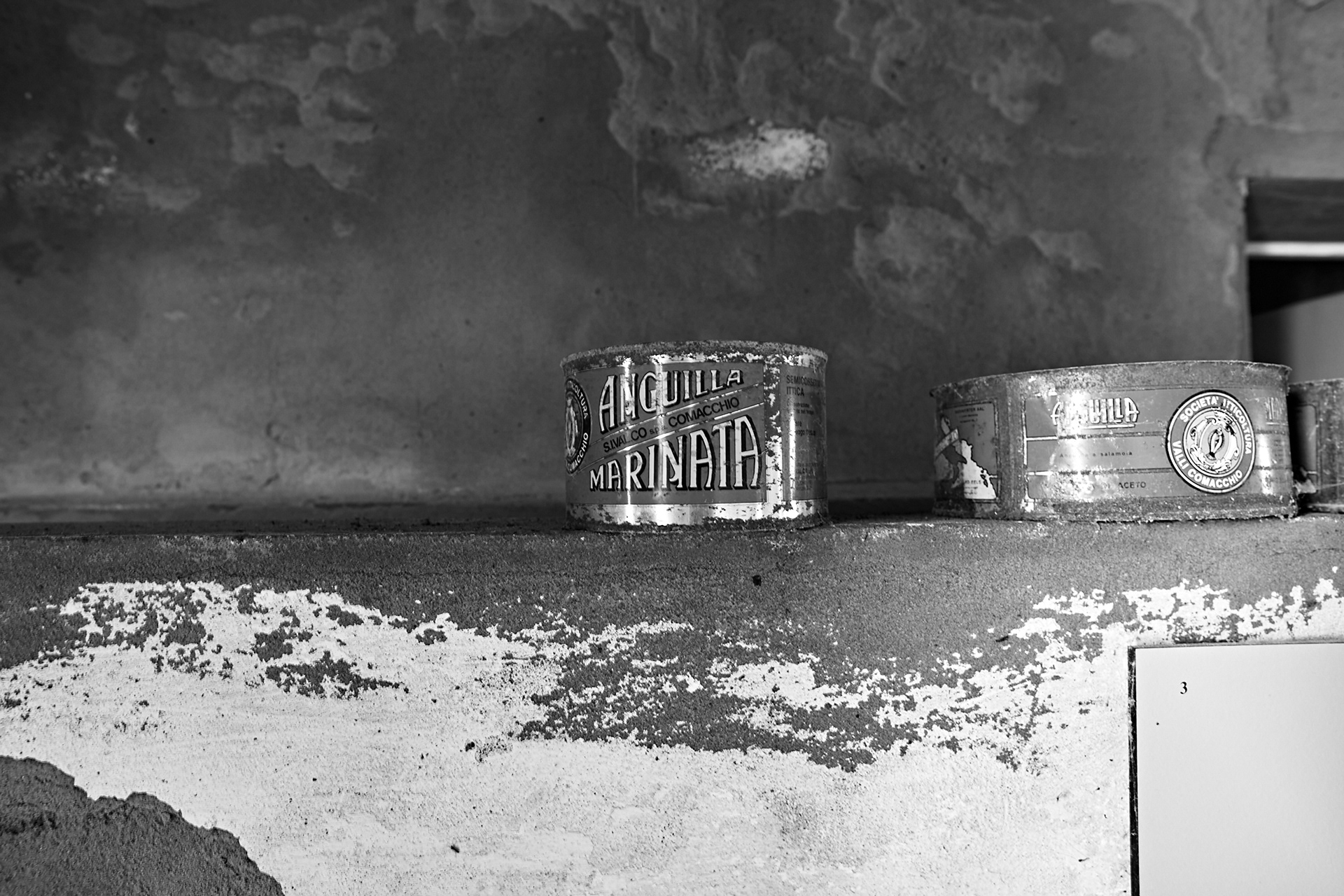
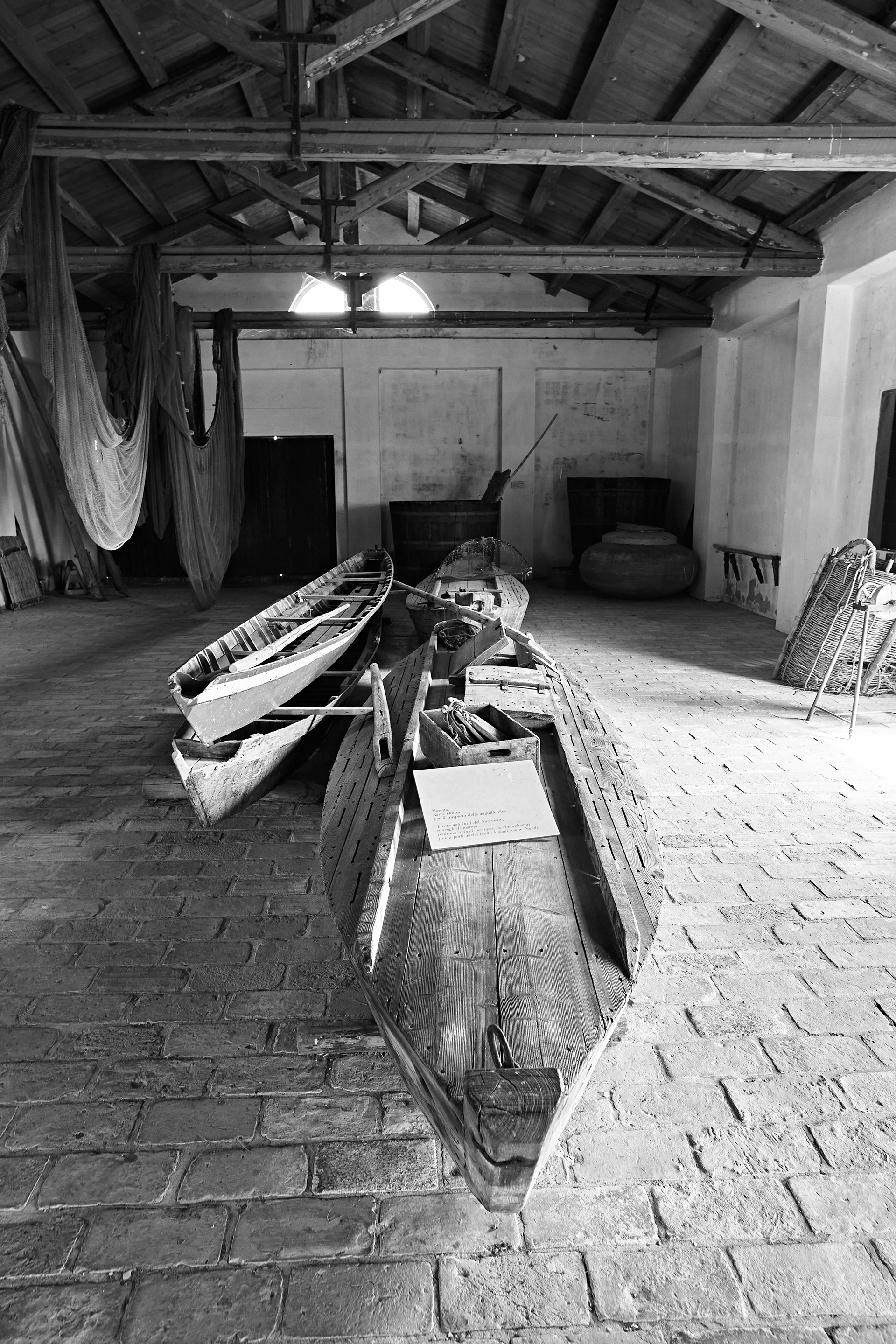
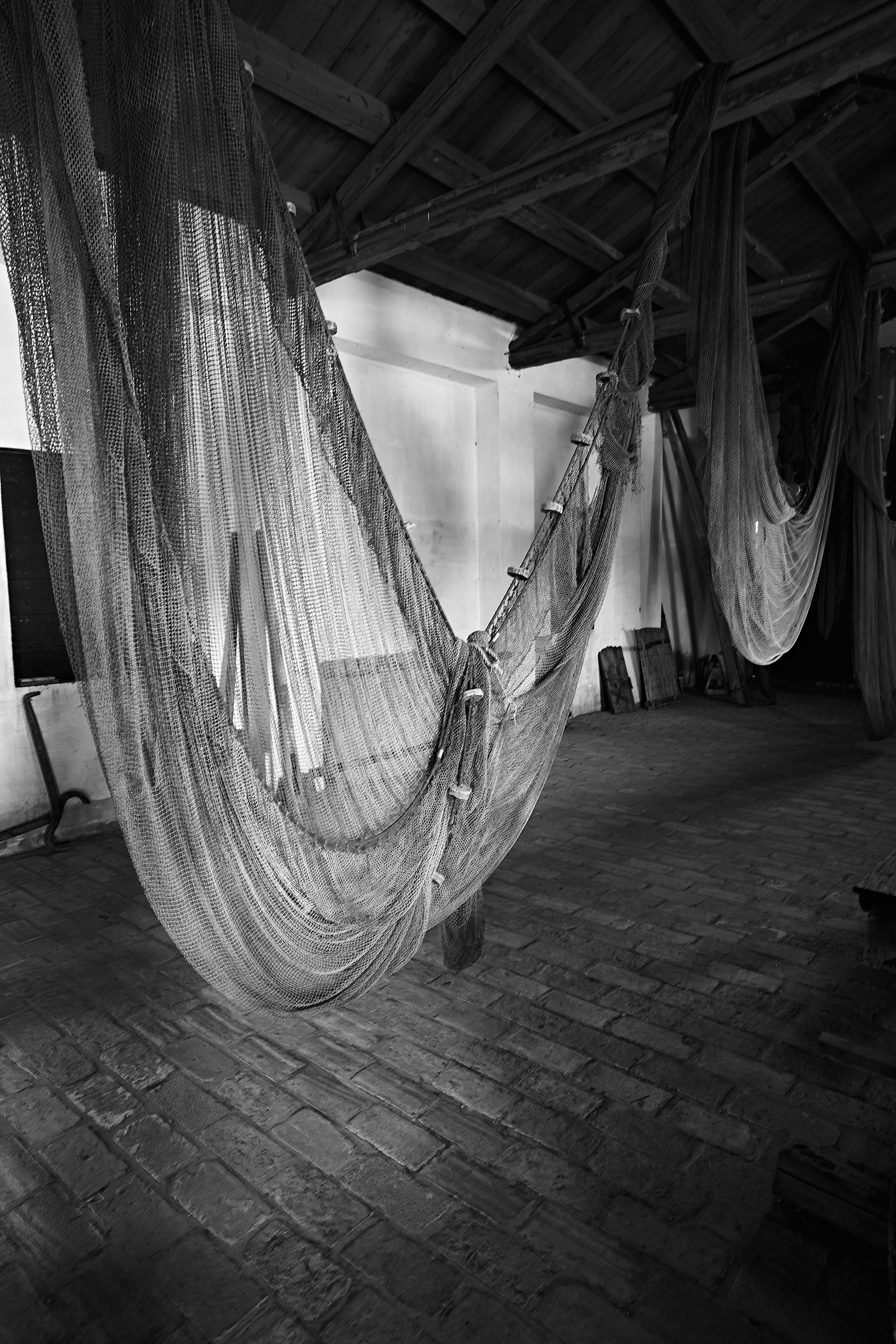
Comacchio - La capitale del Delta



